- CruiseMapper
- Ships and Lines

Cruise Ship Norovirus Outbreaks
Here are listed latest cruise ship Norovirus outbreaks on passenger ships, with information what is and how to avoid Norovirus on cruise ships, CDC reports, and news updates.
From the following links, you can skip the intro and jump directly to illness outbreaks in 2024 , 2023 , 2022 , 2020 , 2019 , 2018 , 2017 , 2016 , 2015 , 2014 , 2013 , 2012 , also read about Zika virus , Seasickness , Hospital (shipboard infirmary) and Mercy Ships (hospital ship Africa Mercy) .
Note: The following CruiseMapper link provides information on Coronavirus/COVID outbreaks on cruise ships .
Norovirus outbreaks on cruise ships in 2024
Cruise norovirus outbreaks updates.
Norovirus on ships is spread through contaminated water, foods and surfaces (public restrooms, railings, doorknobs, handles, board games-cards-puzzles-toys, etc). Norovirus withstands chlorine, prolonged exposure outside the body, as well as temperature extremes. Like a virus, Norwalk can't be effectively treated with antibiotics, making it extremely difficult to eliminate in closed environments - like cruise vessels.
Norovirus may incubate up to 48 hours before the symptoms appear. This makes it difficult to restrict an outbreak. Noro symptoms include nausea, vomiting (kids more than adults, abdominal cramps, diarrhea, general weakness, low fever, headache, muscle aches. The illness could last up to 5 days (depending on the person's age, general health, and severity of the exposure to the virus. Recovered patients can still spread the virus for up to 2 weeks.
Quarantining the ill passengers and crew to their cabins is mandatory (at least for 48 hours) to slow the outbreak's spread. Failing to comply with the crew's orders results in fines or even discharge from the ship.
CruiseMapper's Norovirus survey is based on official data from CDC.gov (USA's "Centers for Disease Control and Prevention"). CDC's "Vessel Sanitation Program" assists the cruise tourism industry in preventing and controlling the transmission and spread of gastrointestinal illnesses (Norovirus, ETEC) on passenger ships calling on US seaports.

This program operates under the authority of the Public Health Service Act (fda.gov, "Quarantine and Inspection Regulations to Control Communicable Diseases"). CDC sanitation inspections on passenger ships are conducted twice a year. Scores of 86 are considered passing. Among the issues that CDC health inspectors usually find on board and report are:
- food debris
- dead insects
- insect droppings
- records indicating crewmembers (including cooks and galley staff) working while sick (suffering from gastrointestinal disorders or with acute gastroenteritis/AGE symptoms)
- cracked/corroded equipment
- soiled cutting boards
- food served undercooked
- lack of safety instruction signs.
CDC cruise ship Norovirus reports
Cruise ship outbreaks are reported (posted on the CDC website) when the illness incident meets the following criteria:
- The ship falls within the purview of the Vessel Sanitation Program (VSP). This means if it carries 13+ passengers and has a foreign cruise itinerary with US ports of call in it. Keep in mind, that most departures are from US-based home ports.
- The ship cruise itinerary length is between 3 and 21 days,
- The ship carries 100+ passengers.
- The percentage of infected passengers or crew (cases reported to the ship's med staff) during the cruise is 3% or more. This means small outbreaks on cruise ships will not be reported to the CDC.
CDC cruise ship inspection fees are payable by the shipowner. Fees are based on the vessel's size. VSP doesn't charge fees for consultations related to shipping facilities renovations or new ships. Inspection fees are as follows.
- Small ships (under 3000 GT/gross tons) pay USD 1500 per inspection.
- Small ships (between 3000-15000 GT) pay USD 3000 per inspection.
- Medium ships (between 15000-30000 GT) pay USD 6000 per inspection.
- Large ships (between 30000-60000 GT) pay USD 9000 per inspection.
- Extra-large ships (between 60000-120000 GT) pay USD 12000 per inspection.
- Mega-liners (above 120000 GT) pay USD 18000 per inspection.
Note: When the itinerary doesn't include US cruise ports, the ship is not required to report to CDC, thus no official illness outbreak report would be issued.
CDC ship illness outbreak investigations
VSP (abbrev "Vessel Sanitation Program") monitors CDC's observations on illness patterns for GI (gastrointestinal) outbreaks on passenger shipping vessels ( ferries and cruise ships ).
- VSP conducts outbreak investigations only in cases with 3% or more passengers or crew reported sick with GI symptoms. VSP may also conduct outbreak investigations in cases of unusual GI illness patterns (even if the rate is less than 3%).
- VSP conducts outbreak investigations only on vessels visiting ports in the USA or which are within 15 days of arriving at a US port.
- When an outbreak occurs, VSP asks for ship logs and infirmary records of reported GI cases (symptoms and timing) and illness distribution (among passengers/crew, during each day of the cruise).
- VSP staff usually boards the vessel for epidemiological assessment, interviews, distribution and analysis of illness questionnaires, monitoring cleaning procedures.
- Lab investigations - the onboard med staff often collects stool, vomit, blood specimens, which are then sent to land-based labs to confirm the illness cause.
During the onboard illness outbreak, VSP requires the cruise company to activate the "Outbreak Prevention and Response Plan" (vessel's response to illness cases).
During an outbreak:
- Cleaning and disinfection frequencies are Increased.
- Self-service buffets are stopped.
- All infected (pax/crew) are quarantined to their staterooms/cabins
- Clinical specimens are collected for analysis.
- Daily updates are provided to VSP (cases counts and measures reports)
- All passengers and crew are alerted of the illness.
- Upon boarding on the next scheduled cruise, passengers are notified about the previous voyage's outbreak.
- Occasionally, VSP requires the company to notify port authorities and also to perform cleaning and disinfection in cruise port terminal buildings.
Illness outbreaks on cruise ships (annual statistics)
The following statistics show the number of cruise ship illness outbreaks in recent years. You can compare the number of reports (CDC and news media sources) and the total number of infected (passengers and crew).
In 2014, Time Magazine published the article "The 13 Worst Norovirus Outbreaks on Cruise Ships". In it, the overall winner was Princess Cruises with 5 epidemic illness outbreaks:
- Coral Princess (February 2009, infected 271)
- Crown Princess (January 2010, infected 396)
- Crown Princess (February 2012, infected 363)
- Sun Princess (July 2012, infected 216)
- Ruby Princess (March 2013, infected 276)
Norovirus outbreaks 2023 reports
Norovirus outbreaks 2022 reports, norovirus outbreaks 2020 reports, outbreaks 2019 reports.
In the following table, you can see all 2019-reported Norovirus outbreaks on cruise ships. The listed statistical data is based on CDC or news media reports. It shows the number of sick passengers and crew (with the respective percentage to all), along with the corresponding CDC report pages (if available) as outgoing links.
Note: When the itinerary doesn't include US cruise ports, the ship is not required to report to CDC, thus no official illness report would be issued.
Outbreaks 2018 reports
In 2018, the number of reported illness outbreaks on cruise ships was 15. The total number of infected was 1177 (of those 1099 passengers and 78 crew).
Outbreaks 2017 reports
In 2017, the number of reported illness outbreaks on cruise ships was 21. The total number of infected was 2535 (of those 2450 passengers and 85 crew).
Outbreaks 2016 reports
In 2016, the number of reported illness outbreaks on cruise ships was 23. The total number of infected was 2504 (of those 2378 passengers and 126 crew).
Outbreaks 2015 reports
In 2015, the number of reported illness outbreaks on cruise ships was 23. The total number of infected was 2570 (of those 2458 passengers and 112 crew).
Outbreaks 2014 reports
In 2014, the number of reported illness outbreaks on cruise ships was 17. The total number of infected was 3559 (of those 3354 passengers and 205 crew).
Outbreaks 2013 reports
In 2013, the number of reported illness outbreaks on cruise ships was 22. The total number of infected was 2385 (of those 2249 passengers and 136 crew).
- According to CDC, in 2013 from Norovirus and similar GI (gastrointestinal) illnesses suffered a total of 1409 passengers (which is 7,5% of all passengers on the inspected cruise vessels) and 96 crew/staff members (which is 1,2% of all). With nearly 12 million cruisers departing from USA and Canada ports in 2013, the Norovirus infection rate is ~0,01% of all passengers.
- It should be noted, that in the past years on many CDC inspections was concluded the Noro virus illness source was off the ship.
Outbreaks 2012 reports
In 2012, the number of reported illness outbreaks on cruise ships was 34. The total number of infected was 5542 (of those 5079 passengers and 463 crew).
Norovirus on cruise ships
All important things you should know about the "cruise virus".
Why do Norovirus incidents happen on cruise ships? There are more than 21 million US cases reported annually, of which 1 mill related to kids. Outbreaks happen mostly during winter months and mainly in more crowded places with close quarters. Among those are schools, hospitals, nursing homes, dormitories, prisons, big resorts, bigger passenger ships (including cruise ferries ). Norovirus is often branded as "cruise ship virus" simply because on ships health officials are required to report every gastrointestinal illness incident. This means Norovirus outbreaks are reported more quickly on ships than on land. Just for comparison, the virus can afflict as many as 3000 people per day in only one big city, which is about the passenger capacity of a typical modern cruiser.
What is Norovirus infection? It's a very common, highly contagious, ruthlessly efficient and uncomfortably bad virus affecting the stomach and large intestines. Often called "stomach flu" (the med term is "Gastroenteritis") the infection results in massive vomiting and diarrhea. Sickness outbreaks are considered as such if the percentage of infected people is over 3%. The virus is not seasonal and usually not serious (in medical terms). It hits 1 in 5 people annually and is the cause of ~50% of all foodborne illness outbreaks in the USA and for ~90% of all non-bacterial gastroenteritis worldwide.
The virus is named after an outbreak in Norwalk (OH, USA). Numerous studies confirm that a quick application of hand sanitizer doesn't kill the Norovirus. It takes about 30 sec of hard rubbing with hot water and soap (including under the nails) to wash it. This virus also mutates (changing its strains). As to its efficiency - a mere 20 particles are enough to get you.
What causes Norovirus on cruise vessels is mainly contaminated food/water. When it comes to ships, it spreads mostly through physical contact with sick people or handling contaminated objects. This includes sharing food/utensils and poor hygiene (not washing hands after bathroom use). The virus also spreads fecally, so you can catch it into the onboard laundry, or while changing diapers, etc. However, many passengers likely can blame a sick crewmember for the virus. According to a survey based on 170 inspection records on ships that docked in Florida ports in 2012, on 59 cruises violations of the required illness reporting laws were reported. A total of 130 crew had gotten sick on those voyages and didn't report their illness in the required time period.
The symptoms are nausea, vomiting, diarrhea, indigestion, abdominal cramps. Also possible are mild fever and headache. It takes 1-2 days for the symptoms to appear. The illness lasts 1 to 4 days, but some people (especially elderly) may be contagious for up to 2 weeks after recovery.
What is the treatment? What to do if you got it? Obviously, the first thing is to go to the ship's infirmary (medical center) and contact the doctor. You should drink plenty of water as dehydration is a side-effect of the illness. There is no real treatment for Norovirus - you just wait it out. A few years ago an experimental Norovirus vaccine (applied as nasal spray) was developed by the "Center for Infectious Diseases and Vaccinology" (Arizona State University). The new vaccine generates a good immune response.
How to avoid Norovirus on cruise ships?
- Wash your hands often (hot water and soap), especially before/after eating and after using the bathroom
- Limit physical contacts as much as possible, pack some extra soap, a personal disinfectant (Lysol, Pepto-Bismol), oral rehydration sachets and treatments for diarrhea
- Avoid eating uncooked food (including salads and sandwiches) and food that cannot be washed (unless it can be peeled or shelled), drink only bottled liquids (preferably without ice), don't share drinks/utensils.
- Drink lots of water.
- Compensation for cruise illness. By contract, cruise lines are not required to compensate passengers who fall ill on cruises. However, they will compensate you if the itinerary was altered/canceled due to an illness outbreak. The deal may include up to 50% refund, up to 50% FCC (future cruise booking discount) or an option to cancel for a full refund plus reimbursement of airline change fees. If you have travel insurance, it covers cancellation due to illness. If you've been infected on the ship, it could also cover medical expenses and to compensate you for all days you're not on the ship before the cruise end.
The following "health advisory" list of recommended actions is often issued during gastrointestinal illness outbreak or on embarkation day (of the next scheduled voyage). It has important suggestions on how to avoid spreading the cruise ship virus infection.
- It is critical that excellent standards of personal hygiene are maintained by all on board, as well as avoiding touching surfaces, such as handrails, door handles, elevator buttons, walls.
- Report any observed evidence of vomiting or diarrhea that you may encounter on the ship.
- Ensure that you minimize direct contact with others during this time, such as handshakes, etc.
- Avoid touching your mouth.
- Wash your hands frequently and thoroughly with soap for at least 20 sec and rinse them well under running water. Ensure that you follow this procedure every time you use the WC, after coughing or sneezing, and before eating, drinking or smoking.
- Attempt to always use your own cabin toilet facilities.
- In addition to hand washing, also use the alcohol hand gels provided where available, and in particular before eating in the self-serve buffet restaurant and outdoor food outlets.
- Should you experience any symptoms of vomiting or diarrhea, return to your cabin and immediately report to the Medical Center or Front Office (Reception, if the infirmary is busy) by dialling 999.
Cruise ship virus procedures
What do they do about it? What actions do lines/operators/CDC actually take in response to a Norovirus cruise outbreak?
An "illness outbreak" is considered when 3% or more of all passengers report symptoms to the ship's med staff. In such cases, the CDC requires cruise lines to file a medical report.
The hotel staff is required to implement special cleaning and disinfection procedures for sanitizing the whole ship. To do that, they use stronger solvents, like Microbac, chlorine bleach, hydrogen peroxide. The Lido Deck's bistro/buffet service switches to manned stations. Often, salt-pepper shakers are taken off the tables. The crew starts offering precautionary tips. Sick passengers and crew are quarantined in their rooms, typically for at least 2 days. When Norovirus outbreaks can't be contained, cruise lines might also pull the ship out of service for a few days for sanitizing.
The CDC's "Vessel Sanitation Program" is for monitoring illness outbreaks on passenger ships carrying 100 or more guests on sailings from 3 to 21 days in length. The ship's medical staff is required by the CDC to maintain illness counts for each itinerary involving a stop at a US cruise port and to give CDC the number of all passengers/crew, plus the number of reported diarrhea cases during that voyage. This is done 24 hrs prior to arrival at any US port of call from a foreign port. And they file such reports even if the "illness number" is zero. This protocol only confirms that the CDC knows everything about it.
Other possible actions and results are red level ("Code Red") cleaning. The boarding/embarkation of new passengers is often delayed to permit more extensive disinfection of public areas and the cabins. Usually, a pre-embarkation health advisory is distributed to all boarding passengers. Additional med staff is sent to the ship in port to assist the disembarkation of infected passengers. Another possibility is the cruise ship to cancel all the itinerary's foreign ports of call and to return to its US home-port before the end of the voyage.
Some cruise lines offer hand-sanitizer dispensers near the ship's restaurants, Lido/pool deck areas and other more crowded public spaces in their effort to keep a lid on sickness outbreaks.
In February 2020, the shipowner cruise company Lindblad Expeditions announced the "Premium Purity" program with a shipwide cleaning system based on ACT CleanCoat technology. The program was rolled out fleetwide after a year trial. The innovative ship cleaning process is based on photocatalytic antibacterial spray that when activated by light kills viruses, bacteria, airborne microbes, mould. The disinfecting product and technology were developed by the Danish company ACT Global AS ( Copenhagen ). The spray is chemical-free, odourless, transparent and can be applied to all surfaces.
Zika virus on cruise ships
Zika virus (aka ZIKV) is a Flavivirus - from the genus of the viruses named West Nile, dengue, tick-borne encephalitis, yellow fever. These plus several other viruses may cause encephalitis (acute brain inflammation). In humans, Zika virus causes the Zika fever which is known to occur only within some equatorial regions. In 2014, Zika spread across the Pacific Ocean to French Polynesia, and soon to Easter Island. In 2015, Zika virus reached Central America, the Caribbean, and South America. In South America were recorded several pandemic outbreaks.
The most severe outbreaks were reported in Brazil, with an alarming surge in newborns with microcephaly. If the mother is infected, the virus may cause microcephaly in newborns. This is a neurodevelopmental disorder - babies are born with an underdeveloped head.
Generally, Zika is a mosquito-borne virus spread by Aedes aegypti (aka "yellow fever mosquito") and Aedes albopictus (aka "Asian tiger mosquito"). However, it became "cruise virus" since the decease can also result from intrauterine (contraceptive device), sexual intercourse, blood transfusion, lab exposure, organ/tissue transplantation, breast milk transmission.
In January 2016, the CDC issued travel guidance on affected countries and suggested using enhanced precautions and even postponing travel. Guidelines (specifically for pregnant women) were issued as well. Similar travel warnings were issued by other health agencies and governments. The CDC list of potentially dangerous for travel countries included (alphabetically) Barbados, Bolivia, Brazil, Cape Verde, Colombia, Ecuador, French Guiana, Guadeloupe, Guatemala, Guyana, Haiti, Honduras, Martinique, Mexico, Panama, Puerto Rico, Paraguay, Salvador, Samoa, St Maarten, Suriname, Venezuela.
Cruise lines should warn their pregnant passengers of the virus. Cruise ships publish daily health and safety instructions to their passengers on how to avoid mosquito bites. Zika symptoms are fever, skin rash, pain in joints, conjunctivitis (pink eye). It typically lasts from a few days to a week. For now, the illness cannot be prevented by drugs or vaccines.
"Cruise ship virus" politics
Virus outbreaks on cruise ships are actually not that uncommon. Such viral/bacterial outbreak incidents affect the vacation experience of thousands of people, being packed up in a floating resort for many days on end. In confined spaces with frequent passenger turnover (like big capacity cruise ships), it is easy for diseases to spread - whether food- or air-borne, or otherwise. However, there's a tendency to cover up the severity of this issue.
Some of the world's most famous passenger ships are listed in the virus outbreak statistics, yet one hears so little of it in mass media news. And there is no surprise in that since the "cruise illness" news are nothing but bad publicity for the companies - which is bad for a prosperous multi-billion dollar sea travel vacation business. All major cruise line companies will do their best to keep quiet about virus outbreaks on their ships. There are passenger testimonials about quarantined ships and how badly guests have been treated by the line. Virus outbreak news speaks of a lack of proper hygiene control, badly trained staff, bad ship management. The whole responsibility goes to the shipowner (cruise line company) and its management.
Major (in some cases epidemic) illness outbreaks are among the "biggies" that can bring down the brand's reputation on the market. Cruise illness issues often result in lower booking rates and cheaper prices - which is bad for the business.
So it comes as no surprise that when CDC reports an illness outbreak on some vessel, big media sources do not immediately (or ever) respond to the news. You may hear about it on your local radio station, or on your local cable operator, but not necessarily on ABC, CNN, and often not even on Yahoo and MSN news online. It's not about the passengers' health (never been) - it's about the big money that rules our world.
So keep your hands clean, keep your mind clear, always hope for the best. Bad, if meant to happen, will happen anyway, and nothing can change it.
Seasickness on cruise ships
Seasickness is physical disorientation as a result of conflicting signals received by the brain from different body senses. Our inner ear senses the ship's irregular motion, which our eyes can't see because the floor and walls are stable. Depending on individual balance, our ability to adjust to motions varies, so not everyone experiences seasickness.
Seasickness is one of the most common "cruise illnesses". Passengers sensitive to nausea or motion sickness should consult their doctors for medical recommendations prior to departure. Drugs (like Dramamine) are effective against seasickness. At the cruise ship's Infirmary, and also at Reception Desk is provided (free of charge) Meclizine. Know that the bigger the vessel the more stable it is. Also, motion in midship-located areas (including staterooms) is highly reduced in comparison to forward and aft areas.
Seasickness manifests in different ways and is always a result of the body's attempt to correct for the conflicting inputs received from its senses. Common symptoms are cold sweat, dizziness, drowsiness, headache, nausea. When such symptoms are noticed, passengers should take precautions to prevent intensifying the disorientation. The harder the symptoms, the longer the recovery.
If seasickness symptoms are accompanied by diarrhea or fever, passengers should immediately seek medical treatment for Norovirus and avoid spreading the illness to others.
How to prevent seasickness on cruise ships (tips)
Passengers prone to motion sickness are more likely to suffer seasickness. The following prevention tips can minimize discomfort, so before the cruise:
- choose more sheltered routes (clam waters). Open sea and ocean waters are rough and have larger swells, thus river cruises are among your best choices.
- Choose a large liner as larger vessels are more stable and motions are minimized.
- Book centralized/midship stateroom and/or middle deck cabin, where motions are less noticeable.
- Get a good sleep before the voyage - an energetic, well-rested body adjusts easier to new conditions.
During the cruise tips to divert seasickness symptoms include:
- Get involved in onboard activities - this will occupy your mind while the inner ear adjusts to equilibrium changes.
- Avoid napping or lying down - when the body is horizontal, the ship's motion is more pronounced.
- Avoid eating unknown foods - you don't know how your stomach may react to new food/ingredients. Avoid alcohol and acidic-fatty-spicy foods. Stay well-hydrated by drinking plenty of water.
- Walk around to adjust the body's equilibrium to the ship's motion. When on open decks, focus on the horizon to give your eyes and body similar inputs about any tilting or other motion. Depending on the symptoms' severity, it may take several hours.
- Often get fresh air, take deep breaths, keep your lungs clear.
- Some herbal remedies (in tablets or teas) also can ease the symptoms, including ginger and peppermint. Their efficacy varies by person, and are best used together with other prevention methods.
Search for medical assistance - consult the ship's physician if no actions provide relief.
Cruise ship hospital (medical care)
Cruise vessels are not "hospital ships".
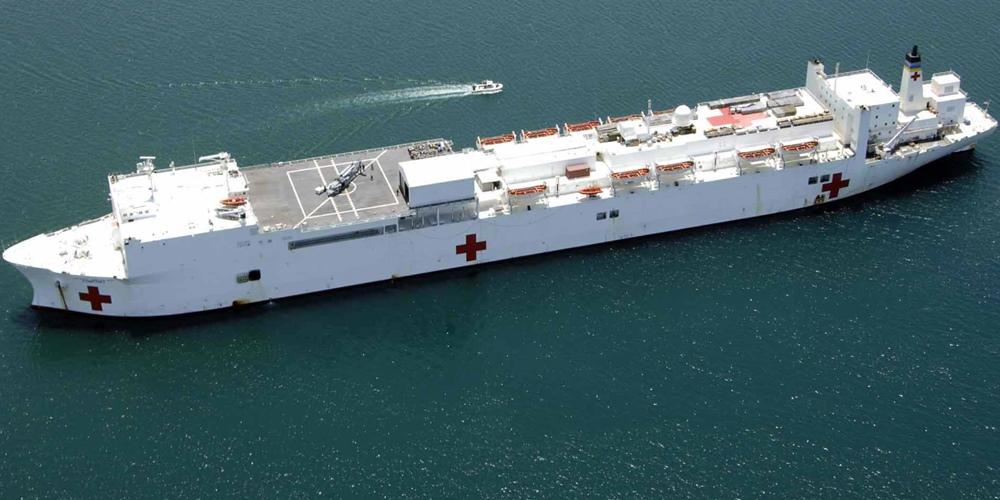
Hospital ships are designated as floating medical facilities (hospitals).
Most hospital ships are navy vessels (operated by military forces) which are specifically built for use in war zones.
Attacking a hospital ship is considered a war crime, but enemy forces have the right to board them for inspections.
As of 2018, hospital ships have Brazil (6), China (5), Russia (6), USA (2), Spain (2), and India-Indonesia-Peru-Vietnam (x1).
The navies of USA, UK, Australia, China, France, Italy, Spain, Argentina, and Japan have some classes of military ships fitted with onboard hospitals.
For passengers with health concerns, medical care on cruise ships is a vital part of their travel planning. Most cruise vessels are equipped with either basic infirmary (a small clinic) or larger hospital where sick or injured passengers are treated and cared for by contractor physicians and nurses on 24-hour duty.
Shipboard hospitals as facilities and equipment vary by cruise line and vessel. Clinic's size usually depends on the ship's capacity (passengers plus crew). Generally, bigger and newer ships offer larger and better-equipped medical facilities and are served by bigger infirmary staff.
The ship's medical personnel are independent contractors. This is for limiting the cruise company's liability. There are no internationally specified regulations governing ship infirmaries and medical staffing. Each company has its own standards provided for its passengers' healthcare.
For finding the Infirmary you can use the ship deck plans . On most vessels, the medical facilities are located midship on a lower deck (for easier access and better stability) and usually among other crew facilities. Every passenger stateroom has the Infirmary's number - posted or by the cabin's phone.
Basic medical care on cruise ships
A cruise ship's medical facility can treat only passengers experiencing minor health issues - seasickness, scrapes, sunburns, etc. More severe medical emergencies can't be handled on the ship and usually require medevacs. Coast guard helicopter teams fly to the ship, hoist the passenger (accompanied by a spouse/relative and a crew nurse) and fly them to the nearest land hospital.
Infirmary's equipment and med supplies provide only emergency response and basic treatments in order to stabilize the passenger until transferred ashore.
In cases of severe emergencies, passengers with life-threatening illnesses or injuries are evacuated off the ship - either by boat (if in or near seaport) or by rescue helicopter dispatched from nearest coast guard or other station. In some cases, nearby ships with better medical facilities may assist.
Both emergency and basic care are available on the ship 24 hours a day. All treatments are paid. Outside regular opening hours fees are higher.
Like inland hospitals, medical treatments at sea are pricey. However, unlike on land, most basic travel insurance policies don't cover medical treatments on cruise ships as they are not from the patient's primary caregiver. Purchasing cruise travel insurance with health coverage (medical clauses) is highly recommended.
Shipboard medical service fees vary and are usually set by medical practitioners. General consultations incur costs similar to home visits. Prescription medications or other treatments cost extra. In most cruise ship hospitals, some supplies and medications are provided to passengers and crew for free - like aspirin, seasickness pills, small bandages.
Mercy Ships
"Mercy Ships" is a charity accredited by Better Business Bureau. It operates hospital ships since 1978 and also has currently the world's largest hospital ship (excluding navy vessels) - MV Africa Mercy.
The organization provides free humanitarian aid worldwide, including health care, community development, and health education projects, mental health, agriculture, and water development programs in mainly developing countries in Africa, Caribbean, South America, Oceania.
The organization's headquarters are in Garden Valley (Texas USA), with another 16 offices worldwide - in UK, Spain, Canada, Germany, France, Denmark, Switzerland, Belgium, Holland, Sweden, Norway, South Africa, Australia, New Zealand, South Korea.
Financial support and supplies are mainly through donations from medical companies (medications, supplies, equipment), corporations (fuel, food, building supplies), governments (port fees, drydock costs), general public and also by the crew (all volunteers on a rotational basis). The crew serves with short-term (2 weeks to 2 years) and long-term (min 2 years) contracts. Volunteer crew members occupy both medical (surgeons, dentists, nurses) and general jobs (deckhands, seamen, engineers, machinists, electricians, teachers, cooks, welders, plumbers, agriculturalists.
The crew on Mercy Ships pay all costs associated with their service - fees, travel expenses, passports, insurance, personal expenses.
As 95 of the world's top 100 largest megapolises are port cities, "hospital ships" could provide healthcare very quickly and more efficiently to large numbers of people.
MV Africa Mercy
MV Africa Mercy is a converted former rail ferry (1980-built as "Dronning Ingrid") drydock-refitted in 2007 at Cammell Laird shipyard (Hebburn, England).
The ship project started in March 1999 with the vessel's acquisition through a donation from Balcraig Foundation (UK), which purchased the boat for US$6,5 million.
Ferry's train deck was reconstructed and converted into a hospital. Project's total cost was over USD 62 million.
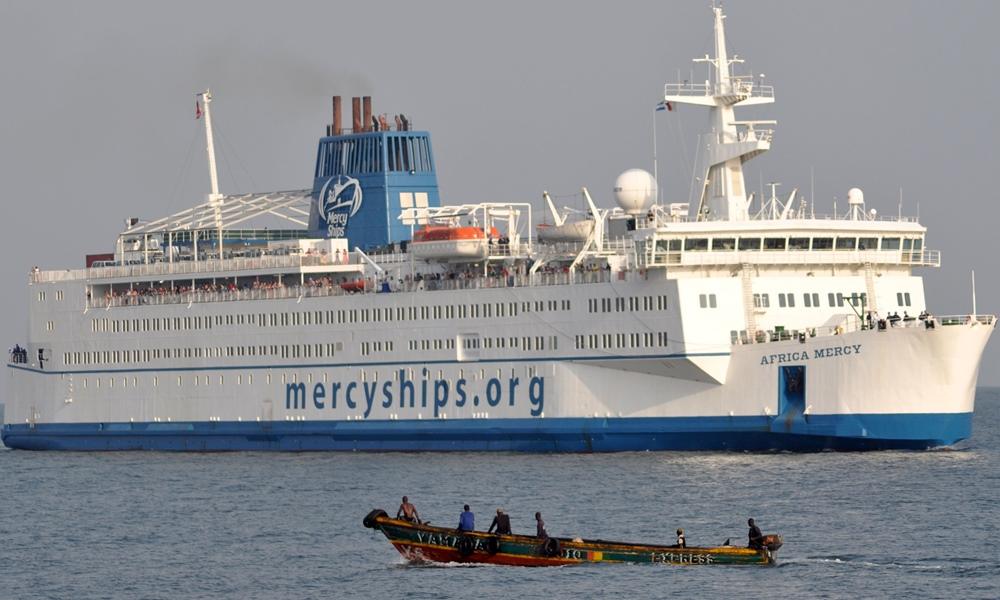
Vessel details include:
- Volume/GT tonnage 16572 tons
- LOA length 152 m (499 ft )
- Width 23,7 m (78 ft)
- Draft 6 m (20 ft)
- Powerplant 4x BW main engines plus diesel generators
- Propulsion two shafts with controllable pitch propellers
- Speed 19 Kn/35 kph/22 mph
- Passenger capacity 484
- Crew capacity 450
- Fleet of 28 vehicles (used in land-based operations)
- Annual drydock maintenance and refurbishment are done in Durban (South Africa).
As for facilities and amenities, the hospital ship has 5 operating rooms, Intensive Care Unit, an ophthalmic unit, CT scanner, X-Ray, labs, recovery ward (82 beds), a daycare center, a school (for all ages), library, launderette, convenience store, restaurant, gymnasium, shops, Starbucks Cafe (donated), satellite communications.
Africa Mercy has a total of 126 staterooms for the staff/crew. They are located on upper decks and include cabins for families, couples and single cabins.
Land-based operations ("Field Service") include mobile clinics providing screening for potential surgery patients, healthcare, dental care, also mental health programs, infrastructure projects.
Bobbie's Bests for Less: 50% off pajama sets, foot peels and more MVPs
- TODAY Plaza
- Share this —

- Watch Full Episodes
- Read With Jenna
- Inspirational
- Relationships
- TODAY Table
- Newsletters
- Start TODAY
- Shop TODAY Awards
- Citi Music Series
- Listen All Day
Follow today
More Brands
- On The Show
Norovirus outbreaks on cruise ships surge to decade-high levels: How to avoid the stomach bug
In 2023, a decade-high number of cruise ships have reported an unwelcome passenger on board: norovirus.
Outbreaks of the stomach bug have surged on cruise ships this year, reaching the highest levels seen in 10 years. Since January 2023, there have been 13 confirmed norovirus outbreaks on cruise ships under U.S. jurisdiction — that's more outbreaks in six months than there have been during any full year since 2012, according to data from the U.S. Centers for Disease Control and Prevention .
After a lull during the COVID-19 pandemic, cases of the highly contagious virus that causes diarrhea and vomiting, aka stomach flu, spiked this winter and spring on land. As post-pandemic travel surges and millions of Americans return to cruise ships, an increasing number of cruise lines are reporting outbreaks at sea.
Norovirus outbreaks on cruise ships
Most recently, a norovirus outbreak in June on the Viking Neptune sickened 110 passengers (over 13% of the ship's guests) and nine crew members with vomiting, diarrhea and abdominal cramps, according to the CDC . The CDC has tracked outbreaks of gastrointestinal illness on cruise ships through its Vessel Sanitation Program (VSP) since 1994.
Several weeks prior, a Celebrity Summit cruise ship reported an outbreak of norovirus that sickened more than 150 passengers and 25 crew members, per the CDC . It was the third norovirus outbreak on a Celebrity Cruises vessel this year. Another popular cruise line, Royal Caribbean International, has reported four outbreaks since January.
Cruise ships are required to report cases of gastrointestinal illness to the CDC before arriving at any U.S. port, and the CDC will notify the public about outbreaks if they meet certain criteria, including: the ship is carrying 100 or more passengers, the voyage is three to 21 days long, and 3% or more of passengers or crew report symptoms, per the CDC .
The number of outbreaks in the first six months of 2023 is higher than the yearly total during every year since 2012, when there were 16 outbreaks on cruise ships reported to the CDC.
Norovirus can spread year-round, but it tends to have a wintertime seasonality and peak during the colder months. Outbreaks are most common between November and April, TODAY.com previously reported.
"It's a virus we typically see all throughout spring, so it’s not unusual to be see cases in April and May, (and) we are continuing to see many cases now," Dr. Luis Ostrosky, an infectious disease specialist at UTHealth Houston and Memorial Hermann in Houston, tells TODAY.com.
However, as travel surges this summer, travel-related illnesses are expected to surge, as well. “I think our travel frenzy after COVID is partially fueling this continued spread (of norovirus),” says Ostrosky.
What should people know about norovirus and how to avoid getting sick on cruise ships this summer?
Norovirus symptoms and treatment
The most common symptoms of norovirus are vomiting, nausea, diarrhea and abdominal pain, Dr. Albert Ko, infectious disease physician and professor of public health, epidemiology and medicine at Yale School of Public Health, tells TODAY.com.
Less commonly, norovirus may cause a headache, muscle aches, or a low-grade fever — symptoms usually develop within one to two days after exposure to the virus, per the CDC .
In the vast majority of people, norovirus symptoms will last several days and resolve on their own.
There’s no specific treatment or antiviral for norovirus, according to Ostrosky, but most cases can be managed at home with supportive care like hydration and rest. Sick people should also isolate until their symptoms resolve, the experts emphasize.
Some people are at higher risk of developing severe norovirus symptoms — these include infants, the elderly, and people with compromised immune systems, Ostrosky noted.
How does norovirus spread?
Norovirus is highly contagious and can spread directly through sick people and contaminated surfaces, food, or drinks.
Transmission often occurs when tiny virus particles in feces or vomit from an infected person end up in another person's mouth through direct contact or by touching contaminated surfaces and putting unwashed hands in the mouth or nose, TODAY .com previously reported .
Norovirus can also get into food before, during or after preparation, and it's the top germ causing foodborne illness in the U.S., per the CDC . Virus particles can contaminate drinking water that isn't treated properly or pools when people poop in the water.
It only takes a small number of virus particles for norovirus to spread, which is why norovirus causes so many explosive outbreaks, Ko previously told TODAY.com.
Exposure to less than 100 norovirus particles can make someone sick, and infected people typically shed billions of particles, according to the CDC.
Most people are infectious from symptom onset until about two or three days after recovering, but some people can remain contagious for weeks, Ko notes. People can get infected with norovirus multiple times in their lifetime.
Is norovirus common on cruise ships?
Certain environments are more conducive to the virus spreading. According to the CDC , the most common settings for norovirus outbreaks are health care facilities, restaurants or catered events, schools, day cares and, of course, cruise ships.
Cruise ships are often associated with norovirus because of the enclosed spaces, close living quarters, communal dining and high turnover of passengers, experts note. That said, outbreaks of acute gastrointestinal illnesses are relatively infrequent on cruise ships compared to settings on land, the CDC notes .
How to avoid norovirus on a cruise
Hand hygiene is key to prevent the spread of the highly contagious virus — but the way you clean your hands matters, experts note. It has to be with soap and water, because alcohol-based hand sanitizers are not effective against norovirus.
“Norovirus is one of the few viruses that doesn’t get deactivated by alcohol. You actually need to use soap and water to physically destroy it and remove it from your hands,” Ostrosky previously told TODAY.com.
It's important to wash your hands with soap and clean water frequently, but especially after using the bathroom or changing diapers, before eating and before touching your face.
Surfaces or objects that are contaminated with norovirus can be cleaned with a high-level disinfectant like bleach, per Ostrosky.
On cruise ships, avoid sick people if you can. Passengers who experience norovirus symptoms like vomiting and diarrhea should notify staff and follow recommended precautions, per the CDC .
Caroline Kee is a health reporter at TODAY based in New York City.
These are the cruise ships with the best — and worst — sanitation scores so far this year
- The CDC randomly inspects cruise ships to help prevent the spread of stomach viruses.
- The agency has reported 13 norovirus outbreaks on cruise ships this year.
- These are the cruise ships with the best and worst sanitation report cards in 2023 so far.

There's nothing like a stomach virus to ruin your vacation, as hundreds of cruise ship passengers have unfortunately learned this year.
The Centers for Disease Control and Prevention has reported 13 norovirus outbreaks on cruise ships so far in 2023. The last time the industry's yearly gastrointestinal illness outbreak total was that high was back in 2016 — and it's only July.
For the agency to report a cruise-ship outbreak, 3% or more of passengers or crew members must report symptoms of gastrointestinal illness, such as vomiting and diarrhea, to the ship's medical staff. During the most recent outbreak, a 14-day cruise aboard the Viking Neptune in June, slightly over 13% of passengers (110 of 838) reported being ill with predominant symptoms of abdominal cramps, vomiting, and diarrhea, according to the CDC.
The nasty stomach bug isn't just a cruise-ship problem, though. Norovirus cases have spiked across the United States this year, which some experts say is the result of ending COVID-19 restrictions .
"People often associate cruise ships with acute gastrointestinal illnesses such as norovirus, but acute gastrointestinal illness is relatively infrequent on cruise ships," the CDC says on its website. "Health officials track illness on cruise ships. So outbreaks are found and reported more quickly on a cruise ship than on land."
To try to help prevent the spread of stomach viruses at sea, the CDC randomly inspects cruise ships and scores them on a scale of 0 to 100 through the Vessel Sanitation Program . Inspection scores of 85 and lower are considered "not satisfactory" by the agency.
Related stories
Most vessels have received scores in the high 90s — only one cruise ship, the MSC Seaside, has failed the CDC's sanitation inspection so far this year. The vessel received an unusually low score of 67 , nearly 20 points below the agency's passing grade.
An MSC Cruises representative told Insider at the time that the cruise line had launched an internal investigation based on the inspector's concerns and taken immediate corrective actions.
"MSC Cruises rigorously adheres to health protocols, and the results of this inspection do not reflect the brand's high standards," the person added.
In the past 10 years, only three other cruise ships have received sanitation scores below 70, CDC records show. Violations can include something as small as not posting a raw-eggs advisory on the omelet station or a single fly hovering in a food area. But before going on your next cruise adventure, it doesn't hurt to check out the ship's most recent sanitation rating.
These are the cruise ships with the highest and lowest sanitation scores so far this year:
The 15 cruise ships with perfect scores of 100
The 15 cruise ships with scores below a 95.
Correction: July 17, 2023 — An earlier version of this story included a photo caption that misstated how many passengers and crew members aboard the Nieuw Amsterdam reported being ill during a May voyage. It was 284 people, not 539.
- Main content
We asked: Should I cancel a cruise if my ship had norovirus?
Does it matter what happens on the cruise before your cruise we asked infectious-disease experts for answers..

Traveling has always come with complications. Our By The Way Concierge column will take your travel dilemmas to the experts to help you navigate the new normal. Want to see your question answered? Submit it here .
“What do you do if you’re a passenger on a cruise directly following a norovirus outbreak? Should you rebook?” — Washington Post travel reporter Andrea Sachs
Even though it feels as if we hear a lot about gastrointestinal illness on cruise ships, the Centers for Disease Control and Prevention says outbreaks are “relatively infrequent.” Because health officials track illness on cruises, outbreaks are found and reported quicker on ships than on land, the CDC says.
But it happens . So far this year, the CDC has reported 13 outbreaks of norovirus — more than the annual total of gastrointestinal illnesses reported on cruise ships visiting U.S. ports in each year dating back to 2017; the CDC imposed a no-sail order for much of 2020 because of the coronavirus pandemic, and U.S. cruises were required to follow pandemic-era restrictions until January 2022 , which may have also helped contain norovirus . Although outbreaks may affect more than 100 passengers, the two most recent cases represented about 13 percent and 7 percent of guests, respectively.
So how far do you need to go to evade the stomach bug on your vacation?
Let’s start with what I heard from Bernadette Boden-Albala, the director and founding dean of the Program in Public Health at the University of California at Irvine, who has extensively researched and studied norovirus and is still a fan of cruise travel. In fact, she emailed me from a cruise ship.
Her take: You don’t need to rebook if you hear there has been an outbreak on the sailing before yours. You and the cruise line are on the same page: Nobody wants you getting sick on board.
“Norovirus is a worst fear for all cruise lines,” Boden-Albala says.
She mentioned information you’ll also find on the norovirus page of the Cruise Lines International Association website: When a gastrointestinal illness plagues a cruise, the captain and crew follow deep-cleaning and sanitation practices developed with public health authorities. Additionally, Kendra Holmes, the CEO of Miray Cruises, says a ship’s crew is monitored for symptoms, and if anyone does display symptoms, they’re quarantined and treated.
Shoshana Ungerleider, a board-certified internal medicine physician and host of the “TED Health” podcast, also says that, thanks to the norovirus cleaning protocols on ships, the risk of getting an infection on the following cruise should be quite low.
Flying during summer storm season? Better have a backup plan.
“That being said, norovirus is highly contagious and can be spread from person to person,” she wrote in an email. “If any of the crew members were infected and are still in the incubation period or showing symptoms, there might be some risk of transmission.”
According to the CDC, the incubation period for norovirus — the time it takes between infection and the onset of symptoms — is between 12 and 48 hours.
So the decision to travel or not should depend on several factors, Ungerleider says, including your personal health status and risk tolerance.
For most young and healthy people, norovirus isn’t much of a health risk, says Eyal Leshem, an infectious-disease expert at Sheba Medical Center who previously worked at the CDC. With some hydration and rest, you should recover within days.
But for elderly people or those who suffer from chronic illnesses, Leshem says norovirus can cause severe disease, which may occasionally result in hospitalization and even death. He would advise such travelers to follow up to make sure the ship has followed the CDC’s guidance and recommendations for outbreaks.
Have a travel dilemma for By The Way Concierge? Send it to us here.
Ungerleider says those high-risk travelers may want to consider rebooking their trip for the peace of mind alone.
But not all cruise ships are the same, Boden-Albala says; you can allay some of your fears by choosing ships that come with less risk. Because norovirus risks increase when you have lots of people inside close quarters, look for smaller ships that carry fewer passengers and give you lots of opportunities to spend time outdoors. (So, not a ship like this .)
On board, Boden-Albala avoids crowded situations. “I rarely use a buffet,” she says.
Most importantly, wash your hands a lot. Boden-Albala says this is the best measure you can take to protect yourself and your loved ones from the potential spread of disease. Do it the way you relearned during the pandemic: with soap and warm water for at least 20 seconds, scrubbing around and under your fingernails and between your fingers. Do it not just before eating or drinking, but also before brushing your teeth, blowing your nose, changing a diaper, et cetera.
“You must be diligent beyond your common understanding of when to wash your hands, because there are millions of norovirus particles spreading in various areas,” Boden-Albala says.
You can use hand sanitizer in addition to — but not as a substitute for — hand-washing, as Boden-Albala notes that it doesn’t do well against norovirus on its own.
Lastly, “if you see someone sick like vomiting or having diarrhea, remove yourself from the area and notify cruise staff if they are not already aware,” Boden-Albala says.
Hannah Sampson contributed to this report.
More travel tips
Vacation planning: Start with a strategy to maximize days off by taking PTO around holidays. Experts recommend taking multiple short trips for peak happiness . Want to take an ambitious trip? Here are 12 destinations to try this year — without crowds.
Cheap flights: Follow our best advice for scoring low airfare , including setting flight price alerts and subscribing to deal newsletters. If you’re set on an expensive getaway, here’s a plan to save up without straining your credit limit.
Airport chaos: We’ve got advice for every scenario , from canceled flights to lost luggage . Stuck at the rental car counter? These tips can speed up the process. And following these 52 rules of flying should make the experience better for everyone.
Expert advice: Our By The Way Concierge solves readers’ dilemmas , including whether it’s okay to ditch a partner at security, or what happens if you get caught flying with weed . Submit your question here . Or you could look to the gurus: Lonely Planet and Rick Steves .

How common is norovirus on cruise ships? Here’s why you shouldn’t worry

What's sneaky, super contagious and bound to cause diarrhea and vomiting? If you answered "norovirus," you'd be correct. But what is it, and why is it often associated with cruises?
An excessive number of news reports exist for norovirus cases on ships, making it seem to the unsuspecting public that cruise vessels are dirty or you're likely to get sick if you sail . I'm here to set the record straight.
Find out why norovirus is unfairly labeled a cruise ship illness, what cruise lines do to minimize onboard spread and whether you should be worried about it on your next voyage.
For more cruise news, guides and tips, sign up for TPG's cruise newsletter .
What is cruise ship norovirus?
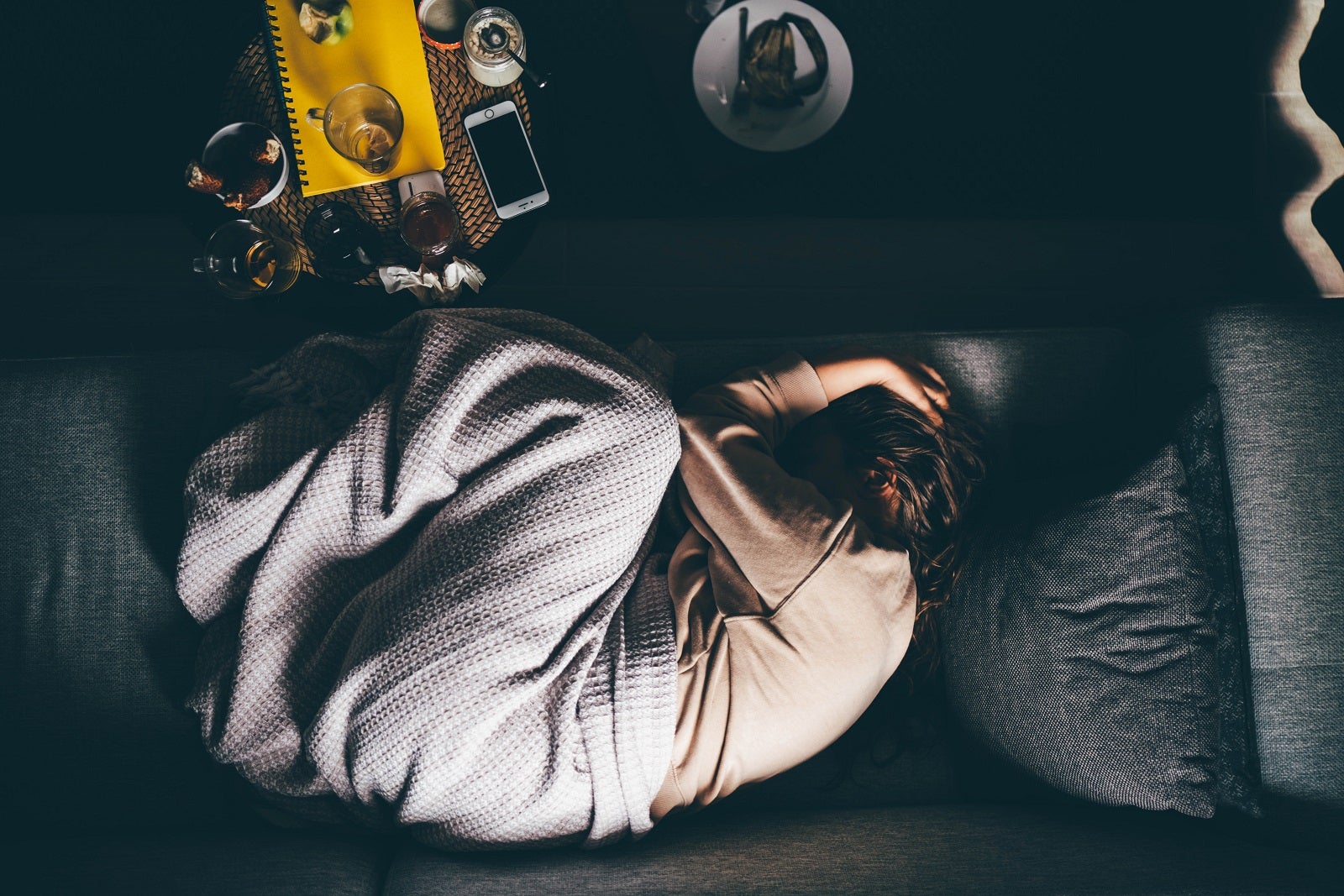
Norovirus is the most common of several viruses that cause severe gastrointestinal illness or acute gastroenteritis. Symptoms may include diarrhea and vomiting, as well as abdominal cramping, headaches, muscle aches and fever — an unpleasant experience any time but especially when you're on vacation.
Norovirus is highly contagious and spreads when you touch a contaminated surface and then put your fingers in or near your mouth, such as when eating without washing your hands. It's also frequently spread through contaminated food, sometimes earning it the nickname "food poisoning," even though there are many pathogens that can cause foodborne illnesses. You might also hear it generically called a stomach bug or the stomach flu despite the fact that noroviruses are not the same as flu viruses.
How does norovirus spread on cruise ships?
What causes norovirus on cruise ships, anyway? Norovirus spreads easily in close quarters, such as those found on cruise ships. Although it can spread from person-to-person contact, on vessels, it's most commonly passed when passengers fail to wash their hands after coming in contact with high-touch areas, such as handrails, elevator buttons and serving utensils in the onboard buffets.
Infected passengers who don't wash their hands after coughing, sneezing or using the restroom are the reason those surfaces become contaminated in the first place. To avoid both spreading your own germs and picking up the germs of others, wash your hands frequently, especially before eating, for at least 20 seconds with soap and warm water, making sure to scrub around your fingernails and between your fingers.
Contaminated food is also a cause, but it's not as common on ships, where the staff is meticulously trained to follow health and safety guidelines for sanitation. Standards are enforced by the U.S. Centers for Disease Control and Prevention. (See the next section for more.)
What do cruise ships do to prevent norovirus outbreaks on board?

Cruise lines employ crews dedicated to keeping public areas and high-touch surfaces clean. Galley crews and waiters receive extensive training on food safety and handling.
Lines also screen passengers for signs of illness at embarkation. They ask passengers who feel ill during their cruises to report symptoms to the medical center and keep themselves isolated in their cabins.
On ships where outbreaks occur, the crew conducts a deep cleaning of the ship after passengers have disembarked and before the next sailing begins. In cases where outbreaks are particularly severe, subsequent sailings could be canceled to allow for more thorough sanitization.
Additionally, the CDC's Vessel Sanitation Program, implemented in the 1970s, subjects all passenger ships carrying 13 or more people to random, unannounced inspections if they wish to call on ports in the United States.
As part of the program, ships are required to adhere to stringent health and safety protocols that dictate everything from the cleaning of high-touch areas to how food is stored in freezers, refrigerators and galleys.
VSP inspectors board ships and conduct thorough checks to ensure compliance, and the standards are high. A score of less than 86 out of 100 is considered failing. You can find a list of the most recent inspection scores and lists of violations for each ship on the VSP website .
Should you worry about getting norovirus on a cruise?
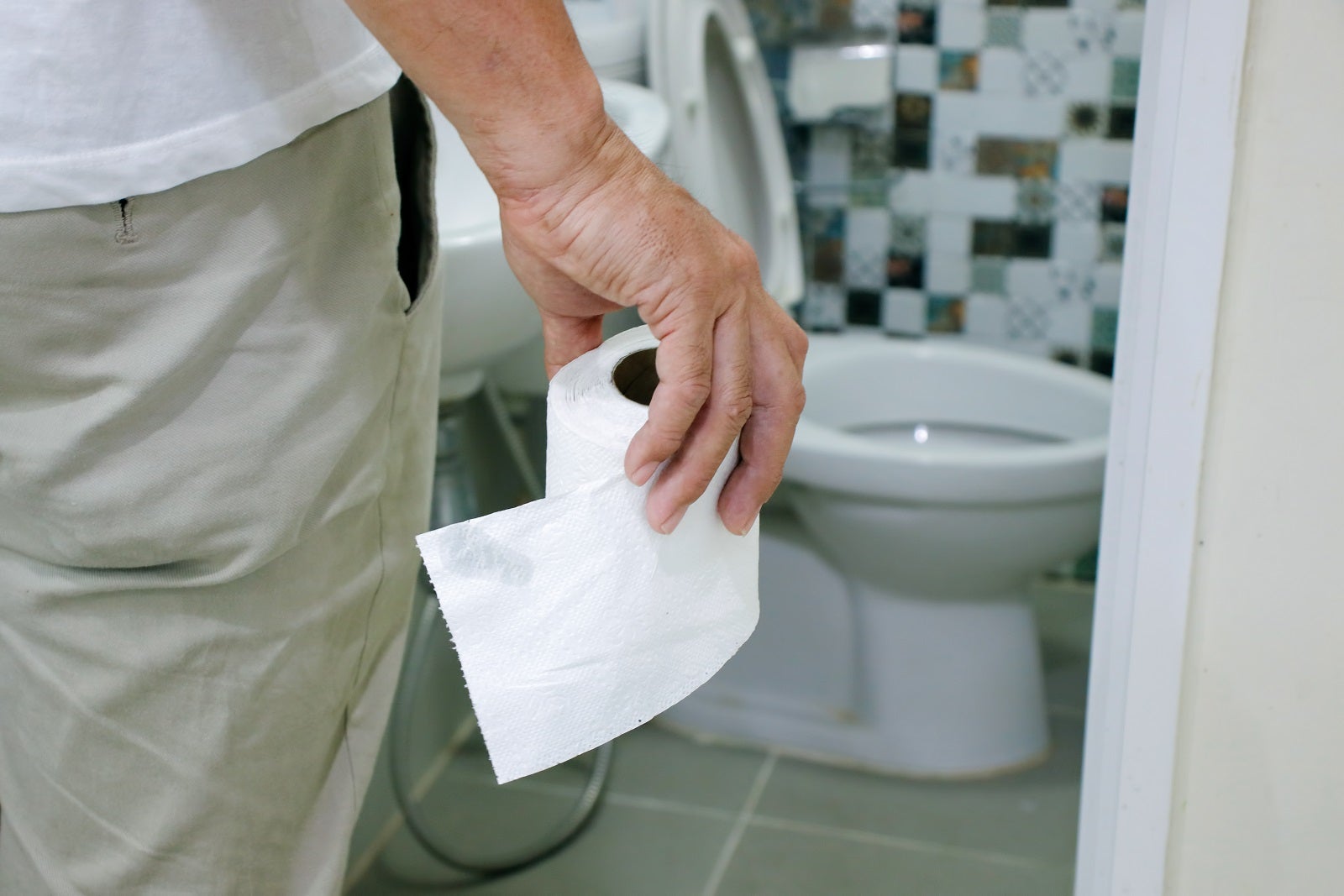
The short answer is no. "People often associate cruise ships with acute gastrointestinal illnesses, such as norovirus, but acute gastrointestinal illness is relatively infrequent on cruise ships," the CDC says on its " Facts About Noroviruses on Cruise Ships " page.
Based on the math, you have less chance of catching a gastrointestinal illness on a ship than at many places you're likely to visit on land.
The CDC estimates only about 1% of all annual U.S. norovirus cases happen on cruise ships. The numbers are greatest in nursing homes, hospitals, schools and restaurants, which collectively account for about 91% of cases.
In a study of acute gastroenteritis cases from 2006 to 2019 (before the cruise industry's COVID-19 shutdown), the CDC found that the number of cases on ships decreased over those 14 years. It also noted that the number of cases tends to be higher on larger ships and on voyages of a week or longer.
"The rate of … illness on cruise ships decreased during 2006-2019 for passengers and crew," the report says. That's good news for cruisers.
During that time frame, approximately 127 million passengers sailed on the 252 cruise ships under VSP jurisdiction. Of those 127 million cruisers, 26,450 reported symptoms of gastrointestinal illness while on board. It sounds like a large number, but it amounts to just 0.02% (two one-hundredths of one percent) of cruisers throughout those 14 years, with the total number of cases decreasing from 4,507 in 2006 to 1,201 in 2019.
If you'd like to check out the outbreak information, you can find a detailed list of ships that have had acute gastroenteritis outbreaks (many of which were caused by norovirus), listed by year, about halfway down the CDC's outbreak page .
For more details on how to keep yourself healthy on board, visit TPG's story on how to avoid getting sick on a cruise .
Why are there so many cruise norovirus reports on the news?

The simple answer is that cruise ships are required to report cases of acute gastroenteritis to the CDC, even when the numbers are low. In contrast, other entities — schools, nursing homes, hospitals and restaurants — are not.
"Health officials track illness on cruise ships. So outbreaks are found and reported more quickly on a cruise ship than on land," reads the CDC's facts page .
Specifically, the medical staff from each cruise ship must submit a report with the number of ill passengers within 24 to 36 hours of its arrival at a U.S. port from a foreign port, even when no cases of gastrointestinal illness are present. They must also submit reports if 2% or more of the passengers and crew become ill and the ship is scheduled to visit a U.S. port within 15 days. If the number hits 3% or more, cases must be reported to the CDC even if the ship is not scheduled to call on a U.S. port within the next 15 days.
That means data for norovirus on cruise ships is more readily available than for other entities. It's easy to make norovirus case numbers sound alarming, but context matters. For example, 100 cases on a single ship might seem like a lot, but on a vessel like Oasis of the Seas, which carries more than 5,400 passengers, 100 cases are only about 2% of the onboard population.
Bottom line
Should you be worried about catching norovirus or another gastrointestinal illness when you cruise? The CDC says cruises account for some of the lowest case numbers in the U.S. annually.
Your chances of finding yourself confined to your room and hunched over a toilet for a week are slim when you sail, especially if you take common-sense precautions like washing your hands and not sharing drinks, utensils and other items that easily spread germs.
Have more cruise questions? TPG has answers:
- Are cruises safe? Here's what you need to know before you sail
- Packing for a cruise? These items aren't allowed on board
- Man overboard: Cruise ship overboards and how they happen
- What is baked Alaska, and why is it paraded around cruise ships?
- What are the largest cruise ships in the world?
- Gentlemen hosts: These men cruise to make sure single ladies have a great time
- What is the Jones Act and how does it affect cruise ships?
- What is a lido deck on a cruise ship?
- What's a cruise cabin guarantee and will it save you money?
- What's the difference between a cruise ship concierge and a butler?
Watch CBS News
Norovirus outbreaks surging on cruise ships this year
By Emily Mae Czachor
July 12, 2023 / 10:33 AM EDT / CBS News
Norovirus outbreaks spiked on cruise ships this year, with data showing more outbreaks happened between January and June than over the course of any other full calendar year in the last decade. Thirteen norovirus outbreaks have been reported on cruises so far in 2023, according to the U.S. Centers for Disease Control and Prevention , which keeps a record of annual case counts dating back to 1994.
The most recent outbreak hit passengers and crew members on board a Viking Cruises trip from Iceland that docked in New York on June 20. More than 13% of passengers on the Viking Neptune — 110 of 838 in total — reported being ill while onboard, according to the CDC. Nine crew members reported being ill as well. Health officials at the CDC determined that norovirus caused the outbreak after Viking Cruises collected and sent specimens to the agency's laboratory for testing.
Those cases in June came after multiple norovirus outbreaks in previous months that affected a range of cruise lines.
In May, two outbreaks were reported on voyages led by Celebrity Cruises and Holland America. In March, Celebrity Cruises reported two norovirus outbreaks, as did Royal Caribbean International and Princess Cruises. Princess Cruises reported its first outbreak of the year in February, and Royal Caribbean International reported two the previous month. P&O Cruises also reported an outbreak on its Arcadia cruise ship this year.
The CDC's tally of norovirus outbreaks so far confirmed on cruise ships in 2023 is already higher than any annual outbreak tallies since 2012, when the health agency recorded 16 outbreaks.
Symptoms of norovirus
Norovirus is a highly contagious virus that causes acute gastroenteritis, which is inflammation in the stomach or intestines, according to the CDC . Health officials say norovirus is the most common cause of vomiting and diarrhea as well as the most common type of foodborne illness .
Norovirus is often referred to as a "stomach bug" or "stomach flu" (although it is not a form of flu). It causes a variety of symptoms including nausea, vomiting, diarrhea and stomach pain. People infected with the virus may also have headaches, fevers and body aches, and are at risk of dehydration.
The virus spreads easily and is typically contracted when someone accidentally ingests tiny particles of vomit or feces from someone who is infected with it. The CDC writes that people who are infected "can shed billions of norovirus particles that you can't see without a microscope," and exposure to just a few norovirus particles can make someone sick.
Symptoms typically emerge within 12 to 48 hours of being exposed. Most people get better after a few days, but severe cases may require hospitalization.
Studies have shown that norovirus can continue to spread for two weeks or more after an infected person stops having symptoms of the illness, according to the CDC.
- Centers for Disease Control and Prevention
- Cruise Ship
Emily Mae Czachor is a reporter and news editor at CBSNews.com. She covers breaking news, often focusing on crime and extreme weather. Emily Mae has previously written for outlets including the Los Angeles Times, BuzzFeed and Newsweek.
More from CBS News
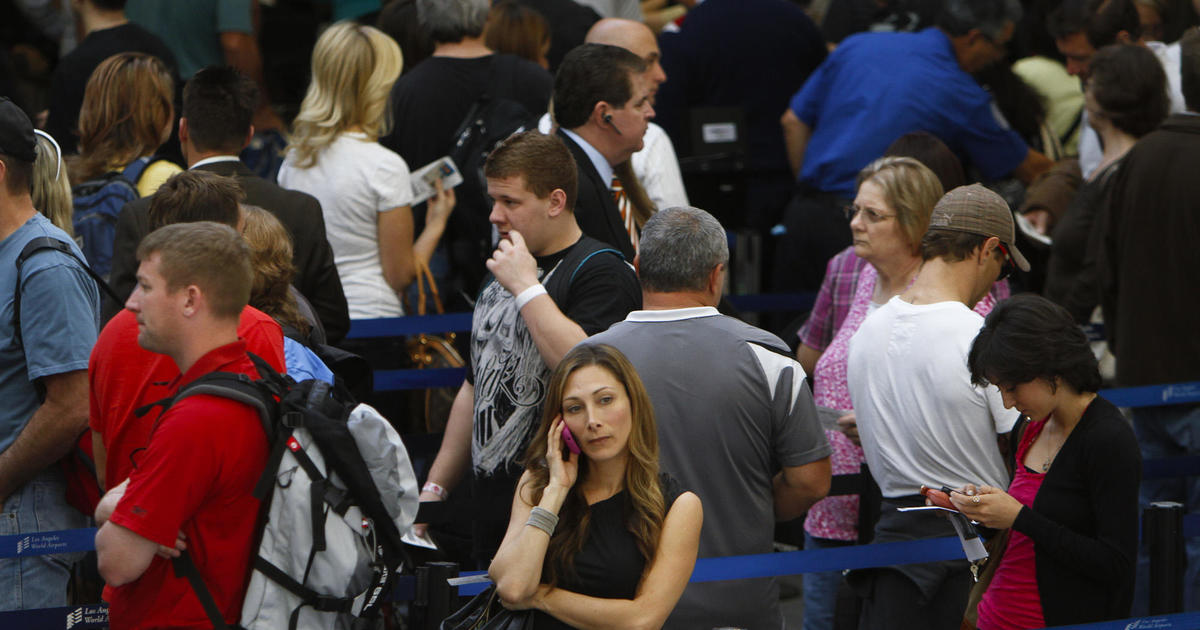
More than 300 tried to evade airport security in the last year, TSA says

More than 1 in 8 women feel mistreated during childbirth, study finds
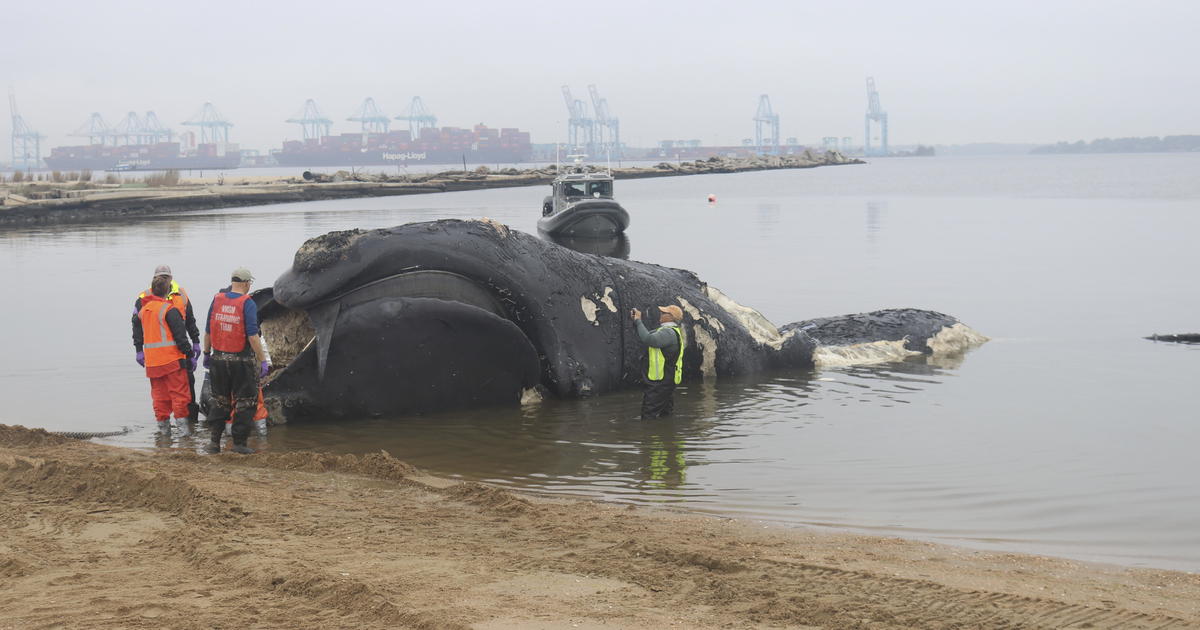
Endangered whale found dead off Virginia was killed in ship collision

Earthquakes, aftershocks rattle NYC and beyond: "One of the largest" East Coast quakes in the last century

- April 4, 2024 | A New Era of Science on the Lunar Gateway Space Station
- April 4, 2024 | Asteroid Triumph: NASA’s History-Making OSIRIS-REx Mission Awarded Robert Goddard Memorial Trophy
- April 4, 2024 | Scientists Shed New Light on the Anti-Aging Effect of Vitamin D
- April 4, 2024 | Molecular Memory Breakthrough: Entering a New Era of Data Storage
- April 4, 2024 | Challenging Conventional Wisdom – Astronomers Discover the Dual Nature of Galaxy Groups and Clusters
Surge at Sea: Alarming Increase of Norovirus Outbreaks on Cruise Ships
By SciTechDaily July 14, 2023
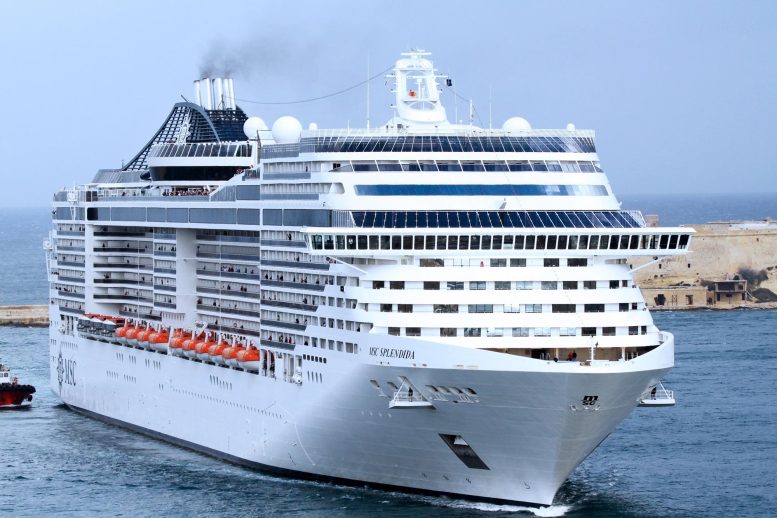
The allure of the open sea, captivating itineraries, and the luxurious promise of a carefree escape have long made cruising a popular choice for vacationers. However, this industry’s lustrous appeal has recently been overshadowed by a surge in outbreaks of a particularly stubborn and contagious pathogen — Norovirus.
Since the start of this year, an unsettling trend has emerged. According to data compiled by the Centers for Disease Control and Prevention (CDC), there have been 13 outbreaks across six different cruise lines. This alarming number marks the highest incidence of such outbreaks since 2012 when there were 16 across eight lines over the entire year.
In light of these recent developments, it’s imperative to explore and understand the nature of Norovirus — what it is, why it’s a recurring issue aboard cruise ships, and its impact on the cruise industry. This article aims to shed light on these matters, unpacking the complexities of the problem, and highlighting the steps that are being taken to address it.
The recent surge in Norovirus outbreaks underscores the necessity of vigilance and proper understanding of this issue, both for those planning a dream vacation at sea and for those in the cruise industry itself. Together, we can work towards ensuring that cruise ships remain a place of relaxation and enjoyment, rather than a breeding ground for this troublesome virus .
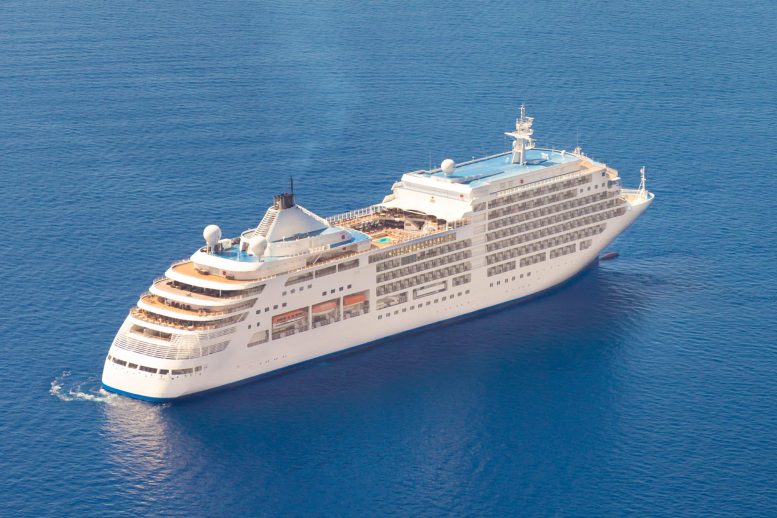
What is Norovirus?
Norovirus, sometimes referred to as the “winter vomiting bug,” is a highly contagious virus that causes gastroenteritis, an inflammation of the stomach and intestines. Named after Norwalk, Ohio, where the first outbreak was identified in 1968, norovirus can lead to severe vomiting, diarrhea, stomach cramps, and, in certain cases, even more serious consequences such as severe dehydration.
The virus is commonly spread through direct contact with an infected person, consuming contaminated food or water, or touching surfaces or objects contaminated with the virus. One of the main challenges in containing norovirus is its ability to survive on various surfaces for a significant amount of time, making it easy to pick up unknowingly.
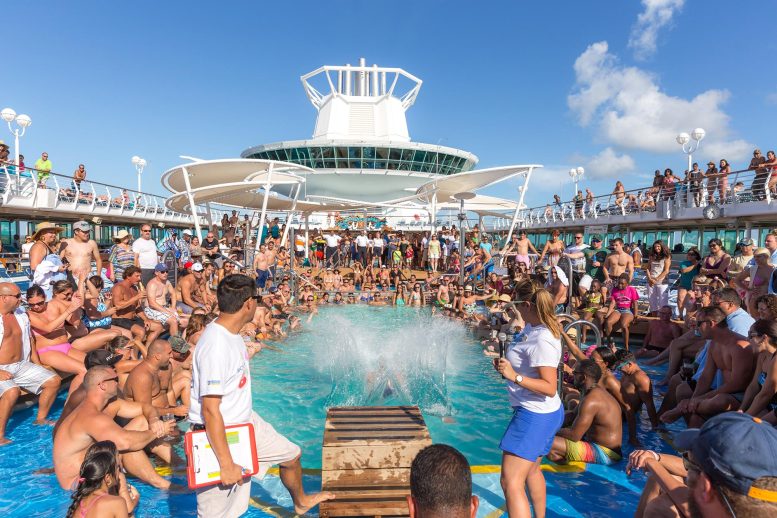
Why is Norovirus a problem on Cruise Ships?
Highly contagious in close quarters.
The design and operation of cruise ships often involve large groups of people living in close proximity, sharing dining areas, entertainment spaces, and public restrooms. This makes it easy for norovirus to spread rapidly from person to person.
Quick and Vast Outbreaks
When a single case of norovirus appears on a cruise ship, it can quickly become an outbreak affecting hundreds or even thousands of people. This can happen incredibly quickly due to the confined nature of a cruise ship and the frequency of close interactions among passengers and crew.
Contaminated Food and Water
Cruise ships are known for their vast buffets and dining options. This presents an opportunity for the virus to spread if food or water becomes contaminated, either by an infected person or through improper handling and storage.
Difficulty in Proper Sanitation
While cruise ships have strict sanitation practices, the resilience of norovirus complicates matters. The virus can survive for days on surfaces and is resistant to many common disinfectants, making it challenging to eliminate once an outbreak has occurred.
Interruption of Planned Activities
A norovirus outbreak can cause significant disruption to the planned activities and itineraries of a cruise. Infected individuals must be isolated, common areas may need to be closed for cleaning, and in severe cases, the ship may even have to return to port.
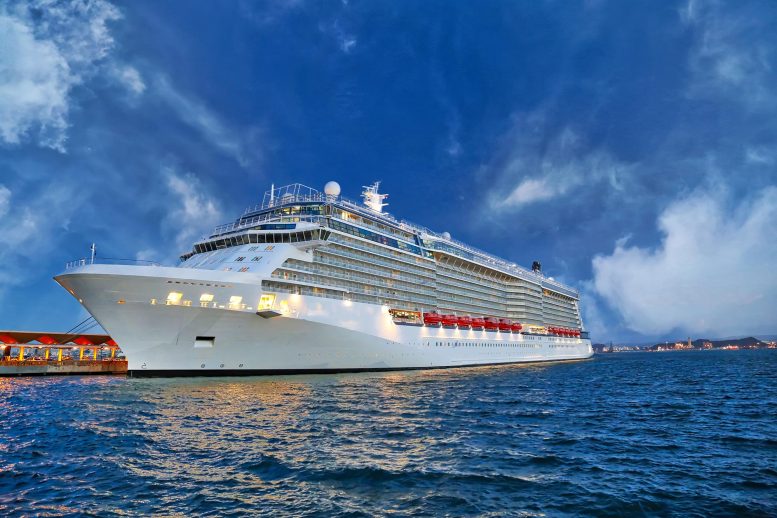
The Impact of Norovirus on Cruise Industry
Cruise lines have had to invest heavily in cleaning and sanitation protocols, disease detection methods, and passenger education to combat the threat of norovirus. In many instances, outbreaks have led to public relations challenges, decreased passenger satisfaction, and financial losses due to trip cancellations and medical costs.
Moreover, the cruise industry often finds itself under scrutiny following an outbreak, which can affect the public’s perception and willingness to book cruises, ultimately impacting the industry’s bottom line.
The threat of norovirus on cruise ships is a serious issue that has both health and economic impacts. The confined environment of a cruise ship, combined with the virus’s highly contagious nature, creates a significant challenge. It’s crucial for cruise lines, passengers, and health officials to remain vigilant, proactive, and informed to prevent and contain potential norovirus outbreaks.
While the industry has made strides in improving sanitation protocols and disease prevention measures, the threat of norovirus remains a considerable concern that must be continuously addressed to ensure the safety and well-being of all passengers at sea.
More on SciTechDaily

Smartphone Norovirus (‘Cruise Ship’ Microbe) Detector [Video]

Using a Smartphone to Detect Norovirus (Winter Vomiting Bug)

The Looming Marburg Crisis: How Virus Outbreaks Escalate and Spread

Study Reveals Copper Alloys Destroy Highly Infectious Norovirus

Monkeypox Outbreak: “This Is an Entirely New Spread of the Disease”

COVID, Bird Flu, Monkeypox – A Virologist Explains the Surge of Virus Outbreaks Around the World

Invasive Species “Hitchhiking” on Ships Threaten Antarctica’s Unique Ecosystems

Norovirus Clusters Known to Cause Stomach Flu Are Resistant to Environmental Stresses and UV Disinfection
2 comments on "surge at sea: alarming increase of norovirus outbreaks on cruise ships".
Pay tons of money to be crammed onto a petri dish and no way off, no thanks. Then once you are on board its more $$$ for anything.
I might enjoy a cruise in a small ship with a few people, but having done a trip on a large ship many years ago I found all the hobnobbing with hundreds of other people to be psychologically scream-making ! Far too many humans in one place – no amount of luxury things would compensate for the horror of that, let alone worrying about a virus. So no thanks !
Leave a comment Cancel reply
Email address is optional. If provided, your email will not be published or shared.
Save my name, email, and website in this browser for the next time I comment.
Cruise lines battle norovirus outbreaks, affecting crews, hundreds of passengers. Here's what to know
In all, about 1,700 people reported being sick with norovirus aboard a cruise ship between January and June of this year.
By Monica Galarza and Marissa Bagg • Published July 13, 2023 • Updated on July 13, 2023 at 6:49 pm
The Centers for Disease Control and Prevention is reporting the highest number of norovirus outbreaks in over a decade and it is impacting hundreds of passengers and crew members onboard some of the most prominent cruise lines.
In the first six months ending in June, cruise lines have reported 13 separate outbreaks to the CDC. It’s the most number of reported norovirus outbreaks on cruise ships since 2012.
And this year’s outbreaks represent the highest number since cruises began sailing again in the summer of 2021 after being suspended due to COVID-19.
Get South Florida local news, weather forecasts and entertainment stories to your inbox. Sign up for NBC South Florida newsletters.
One local expert says it’s in part because more people are cruising.
“The hundreds of thousands, if not millions of people that have already gone on cruises without incident. It’s a very small number and it’s there’s nothing to be concerned about,” said Steward Chiron, a cruise expert. “I would not think twice about going on a cruise. I would not think twice about going on a cruise or traveling anywhere.”
Celebrity, Royal Caribbean International, Holland America, Princess and P&O were among the Royal Caribbean and Carnival lines affected.

Woman arrested in Key Largo after fleeing from Monroe County Sheriff's Office deputies

1 dead, 1 left with life-threatening injuries in Lauderdale Lakes shooting
So if you're planning to set sail this summer, here's everything you need to know about the norovirus.
What is norovirus?
According to the CDC, norovirus is the leading cause of vomiting, diarrhea, and foodborne illness in the United States.
It's also not a one-and-done virus. You can get norovirus illness many times in your life because there are many different types of noroviruses and one type may not protect you against the others.
It is possible, however, to develop protection against specific types, but it's not known exactly how long protection lasts.
This may explain why so many people of all ages get infected during norovirus outbreaks.
According to the CDC, your likelihood of getting a norovirus infection is also determined in part by your genes.
How does norovirus spread?
Because people of all ages can get sick with norovirus, it can spread easily and quickly.
The CDC says norovirus can be spread by:
- Having direct contact with someone with norovirus, such as by caring for them, sharing food or eating utensils with them, or eating food handled by them.
- Eating food or drinking liquids that are contaminated with norovirus.
- Touching surfaces or objects contaminated with norovirus and then putting your unwashed fingers in your mouth.
You are at your most contagious when you have symptoms of norovirus illness, especially vomiting or during the first few days after you feel better.
But studies have shown that you can still spread norovirus for two weeks or more after you feel better.
According to Mayo Clinic , norovirus most often spreads in closed and crowded environments, such as hospitals, nursing homes, child care centers, schools and cruise ships.
But it can also spread through contaminated food, water or through sick people and contaminated surfaces.
What are the symptoms of norovirus?
According to the CDC, the most common symptoms of norovirus are diarrhea, vomiting, nausea and stomach pain.
You may, however, experience fevers, headaches, and body aches.
Symptoms usually last one to three days and most people recover, according to the Mayo Clinic.
How do you treat norovirus?
There is no specific medicine to treat people with norovirus illness.
If you have norovirus illness, the CDC recommends you drink plenty of liquids to replace fluid lost from vomiting and diarrhea and help prevent dehydration.
Sports drinks and other drinks without caffeine or alcohol can help with mild dehydration, but these drinks may not replace important nutrients and minerals.
It is important to note that antibiotic drugs will not help treat norovirus infections because they fight bacteria, not viruses.
When was the most recent norovirus outbreak on a cruise ship?
The CDC's latest report of a norovirus outbreak happened on Viking Neptune, a cruise ship owned by Switzerland-based Viking Cruises, during a voyage from June 6 to June 20.
According to the CDC, 110 of 838 passengers and nine of the 455 crew members reported feeling ill during the trip.
The following ships saw outbreaks so far in 2023: Celebrity Summit, Nieuw Amsterdam, Grand Princess, Emerald Princess, Enchantment of the Seas, Celebrity Equinox, Celebrity Constellation, Ruby Princess, Viking Neptune, Jewel of the Seas, Brilliance of the Seas, Arcadia.
What can I do to prevent contracting norovirus?
The key to preventing norovirus , and most other illnesses is simply washing your hands well.
Norovirus is very contagious, but you can take steps to stop it from spreading.
Wash your hands often with soap and water for at least 20 seconds, especially:
- After using the toilet or changing diapers.
- Before eating, preparing, or handling food.
- Before giving yourself or someone else medicine.
It is important to continue washing your hands often even after you feel better.
Chiron says cruise lines try to keep ships clean and limit some interactions.
“What they do is they reduce the person-to-person interactions. So when you go to the buffet for example for breakfast or lunch. Instead of serving yourself a gloved crew member will do it for you,” said Chiron.
When on board, if you see someone with norovirus symptoms, you’re urged to leave the area and alert a crew member.
Norovirus can be found in your vomit or feces (poop) even before you start feeling sick. The virus can also stay in your poop for two weeks or more after you feel better and you can still spread norovirus during that time.
Hand sanitizer does not work well against norovirus. You can use hand sanitizers in addition to hand washing, but hand sanitizer is not a substitute for handwashing.
This article tagged under:
- Search the site GO Please fill out this field.
- Newsletters
Norovirus Outbreaks on Cruise Ships: How to Avoid Getting Sick on Vacation
:max_bytes(150000):strip_icc():format(webp)/7cZXd_5cLI7mNtZRS31XzPzGTeA8lh_k24WTXKJk-mo-3956d73663764f15bce8e3e4ea4d59fa.jpeg)
- There have been 13 norovirus outbreaks on cruise ships in 2023.
- Experts note that the highly congested environment, as well as the fact that people have not been exposed to as many illnesses due to the COVID-19 pandemic, are likely the reason for the increased norovirus numbers.
- Experts recommend maintaining proper hygiene habits and contacting the ship’s medical facility as soon as you don’t feel well in order to avoid spreading illnesses while at sea.
Multiple cruise lines are experiencing norovirus outbreaks.
There have currently been 13 norovirus outbreaks on cruise ships in 2023. The most recent outbreak occurred on a Viking Cruises ship, which traveled from Iceland and docked in New York City. About 13% of its passengers and several crew members became ill with the virus while on board.
With more than 31 million passengers worldwide expected to set sail this year, experts told Health that these highly-congested environments—along with the fact that people have not been exposed to a normal amount of illnesses due to the pandemic—could be the reasons for the increased numbers.
“Loosening of restrictions after the COVID-19 pandemic makes us more susceptible to picking up viruses after several years in seclusion,” Sanjiv Shah, MD, MPH , an infectious disease specialist and chief medical officer for MetroPlusHealth, New York City’s public health insurance program, told Health.
“Children who have been able to avoid the virus during the pandemic are now being exposed to viruses that tend to peak during the school year,” he said. “While norovirus is higher this year, the numbers are not a big outlier compared to pre-pandemic levels.”
Getty Images / Michael Dunning
What Is Norovirus?
Norovirus is the most common cause of gastroenteritis and foodborne illness . Though people often call it the “ stomach flu ,” it has nothing to do with flu, Brian Labus, PhD, MPH, REHS , an expert in infectious diseases, told Health .
“You have to swallow the virus to get sick,” Labus, an assistant professor in the Department of Epidemiology and Biostatistics at the UNLV School of Public Health, said. “That can be through consuming contaminated food or touching a contaminated surface and then touching your mouth or not washing your hands before you eat.”
Norovirus, which causes inflammation of the stomach or intestines, typically causes diarrhea , vomiting, nausea, and stomach pain Bernadette Boden-Albala, DrPH, MPH , director and founding dean of the Program in Public Health at the University of California Irvine told Health . Other symptoms can include fever, headache, and body aches.
Typically, norovirus lasts for one to three days, though you can spread the illness for a few days after.
“Infected people spread the virus widely and make it difficult for public health officials to contain the virus,” Boden-Albala said.
Why the Number of Norovirus Outbreaks Increased
The exact cause for the increase in the number of norovirus cases is not clear, but the increasing demand for cruises could be one explanation for the rise in reported cases, said Labus.
During COVID, the options for cruises were limited, but now that restrictions have been lifted , more people are deciding to take that cruise they had been putting off.
People also are more likely to get sick now since pandemic restrictions have been lifted. For the past few years, people have not been exposed to as many common viruses and illnesses and now that exposure is rising, illnesses are bound to rise as well.
It also is possible the numbers for norovirus on cruise ships appear more alarming than they truly are.
On cruise ships, health officials are legally required to track any illnesses that occur, while this same reporting is not required on land. For this reason, the Centers for Disease Control and Prevention note that outbreaks are reported more frequently on sea than on land.
“The risk of getting norovirus each year is about 1 in 15 [but] a cruise passenger has about a 1 in 5,500 risk of getting norovirus,” Sally Andrews, vice president of strategic communications and public affairs for the Cruise Lines International Association told Health .
Environments Where Norovirus Spreads Quickly
According to Shah, norovirus spreads rapidly anywhere there are large groups of people, like school classrooms, family gatherings, and weddings.
Cruise ships in particular have many of the conditions that make people susceptible to norovirus—close quarters, enclosed spaces, communal dining, and high turnover of passengers.
“The virus is often associated with cruise travel simply because health officials are required to track illnesses on ships,” Shah said. “The CDC estimates only about 1% of annual U.S. norovirus cases happen on cruise ships. Rates are much higher in schools, nursing homes, hospitals, and restaurants, which collectively account for about 91% of cases.”
Minji Kang, MD, an assistant professor and infectious disease specialist in the Department of Internal Medicine at UT Southwestern Medical Center added that norovirus can also be brought onboard by contaminated food or water, or passengers who were infected while ashore.
Yes, Cruise Ships Have Strategies to Prevent Outbreaks
Because norovirus outbreaks can flare up in the close quarters of a ship, the cruise industry has had norovirus prevention programs in place for nearly 20 years, Labus said. “They have the right chemicals needed to control it and the plans and training for how to use them appropriately.”
Cruise ships also have plans for how to deal with ill guests to ensure that they are not infecting other passengers, he said. “It’s important to let the ship’s medical staff know if you are sick so that they can protect the rest of the passengers.”
According to the American College of Emergency Physicians (ACEP), every cruise ship must have a place to isolate any passengers who have a contagious disease. This step helps them minimize the risk of spreading the disease to others.
What’s more, the CDC has established a rigorous Vessel Sanitation Program (VSP) to help prevent the overall spread of illnesses on cruise ships. Not only do they inspect a cruise ship’s medical center, but they also monitor their portable water systems, dining rooms, housekeeping procedures, heating, ventilation, air conditioning (HVAC) systems, and more.
If a cruise ship does not do well on its inspection—or gets an 85% or lower—it cannot set sail until it corrects the issues.
Staying Healthy While on a Cruise
While there have been 13 outbreaks of norovirus on cruise ships this year, Labus explained that not every cruise passenger is going to be exposed to the virus. Still, taking certain steps to prevent the likelihood of getting sick is never a bad idea.
“The most important measure to prevent the spread of norovirus is to wash your hands with soap and water for at least 20 seconds,” said Kang. “This should be done before eating and drinking, brushing one’s teeth, and after going to the bathroom, touching high-hand contact surfaces, and taking care of a sick person.”
She noted that hand sanitizers do not work well against norovirus and that they are not a substitute for handwashing.
For extra peace of mind, you can also research your cruise line prior to booking.
To see how your specific cruise line performed on its VSP inspections, you can visit the CDC website and search their portal. This site also lists any corrective actions taken to remedy any issues. You can even look for cruise lines that have scored a perfect 100.
If you do happen to get sick while on a cruise, Boden-Albala recommends that you follow CDC guidelines and report your illness to the ship’s medical facility as soon as possible. “[You also should] rest and drink plenty of water to rebuild your immunity system and prevent dehydration.”
Even though you may be tempted to conceal your illness, you would be doing a great disservice to the other passengers and the crew on the cruise by keeping it a secret.
“While staying in your cabin [for a day or two] may not make for the best vacation,” Shah said, “it’s important to take precautions to avoid infecting others.”
Centers for Disease Control and Prevention. Outbreak updates for international cruise ships .
Cruise Lines International Association. State of the cruise industry 2023 .
Centers for Disease Control and Prevention. Symptoms of norovirus .
Centers for Disease Control and Prevention. Facts about noroviruses on cruise ships .
Cruise Lines International Association. Norovirus on cruise ships .
American College of Emergency Physicians. Healthcare guidelines for cruise ship medical facilities .
Centers for Disease Control and Prevention. Vessel sanitation program: inspection infographic .
Centers for Disease Control and Prevention. Advanced cruise ship inspection search .
Centers for Disease Control and Prevention. Cruise ship inspection scored 100 .
Related Articles
Find cars that meet your safety needs with AARP Auto Buying Program powered by TrueCar. Learn more.
Popular Searches
AARP daily Crossword Puzzle
Hotels with AARP discounts
Life Insurance
AARP Dental Insurance Plans

Suggested Links
AARP MEMBERSHIP — $12 FOR YOUR FIRST YEAR WHEN YOU SIGN UP FOR AUTOMATIC RENEWAL
Get instant access to members-only products and hundreds of discounts, a free second membership, and a subscription to AARP the Magazine.
- right_container
Work & Jobs
Social Security
AARP en Español
- Membership & Benefits
- AARP Rewards
- AARP Rewards %{points}%
Conditions & Treatments
Drugs & Supplements
Health Care & Coverage
Health Benefits

Staying Fit
Your Personalized Guide to Fitness

AARP Hearing Center
Ways To Improve Your Hearing

Brain Health Resources
Tools and Explainers on Brain Health

How to Save Your Own Life
Scams & Fraud
Personal Finance
Money Benefits

View and Report Scams in Your Area

AARP Foundation Tax-Aide
Free Tax Preparation Assistance

AARP Money Map
Get Your Finances Back on Track

Budget & Savings
Make Your Appliances Last Longer
Small Business
Age Discrimination

Flexible Work
Freelance Jobs You Can Do From Home

AARP Skills Builder
Online Courses to Boost Your Career

31 Great Ways to Boost Your Career

ON-DEMAND WEBINARS
Tips to Enhance Your Job Search

Get More out of Your Benefits

When to Start Taking Social Security

10 Top Social Security FAQs

Social Security Benefits Calculator

Medicare Made Easy
Original vs. Medicare Advantage

Enrollment Guide
Step-by-Step Tool for First-Timers

Prescription Drugs
9 Biggest Changes Under New Rx Law

Medicare FAQs
Quick Answers to Your Top Questions
Care at Home
Financial & Legal
Life Balance

LONG-TERM CARE
Understanding Basics of LTC Insurance

State Guides
Assistance and Services in Your Area

Prepare to Care Guides
How to Develop a Caregiving Plan

End of Life
How to Cope With Grief, Loss
Recently Played
Word & Trivia
Atari® & Retro
Members Only
Staying Sharp
Mobile Apps
More About Games

Right Again! Trivia

Right Again! Trivia – Sports

Atari® Video Games

Throwback Thursday Crossword
Travel Tips
Vacation Ideas
Destinations
Travel Benefits

Beach vacation ideas
Vacations for Sun and Fun

Plan Ahead for Tourist Taxes

AARP City Guide
Discover Seattle

How to Pick the Right Cruise for You
Entertainment & Style
Family & Relationships
Personal Tech
Home & Living
Celebrities
Beauty & Style

TV for Grownups
Best Reality TV Shows for Grownups

Robert De Niro Reflects on His Life

Free Online Novel
Read 'Chase'

Sex & Dating
Spice Up Your Love Life

Navigate All Kinds of Connections

How to Create a Home Gym

Store Medical Records on Your Phone?

Maximize the Life of Your Phone Battery

Virtual Community Center
Join Free Tech Help Events

Create a Hygge Haven

Soups to Comfort Your Soul

AARP Smart Guide
Spring Clean All of Your Spaces
Driver Safety
Maintenance & Safety
Trends & Technology

How to Keep Your Car Running

We Need To Talk
Assess Your Loved One's Driving Skills

AARP Smart Driver Course

Building Resilience in Difficult Times

Tips for Finding Your Calm

Weight Loss After 50 Challenge

Cautionary Tales of Today's Biggest Scams

7 Top Podcasts for Armchair Travelers

Jean Chatzky: ‘Closing the Savings Gap’

Quick Digest of Today's Top News

AARP Top Tips for Navigating Life

Get Moving With Our Workout Series
You are now leaving AARP.org and going to a website that is not operated by AARP. A different privacy policy and terms of service will apply.
Go to Series Main Page
Norovirus Cases Are Rising on Cruises. Here’s How You Can Stay Safe
Keep hands clean as stomach bug cases rise.

Larry Bleiberg,
Just as travel has begun to bounce back after the pandemic, cruise ship passengers are facing another threat to their vacation: norovirus .
Thirteen ships so far this year have reported outbreaks of the highly contagious stomach bug, the most since 2012, according to the U.S. Centers for Disease Control and Prevention (CDC) . Nearly 1,700 passengers have come down with the virus, which causes vomiting, nausea, diarrhea and stomach pain. Not only does it take the joy out of vacation, keeping passengers confined to their stateroom, but for older travelers, there’s a concern of dehydration, doctors say.

AARP Membership — $12 for your first year when you sign up for Automatic Renewal
The bug thrives in crowded conditions and is spread through food and by touching contaminated surfaces. The easiest way to avoid the ailment is to wash your hands with soap and water after using the bathroom, before eating and after touching surfaces touched by others.
Samuel Mathis, M.D., an assistant professor in the University of Texas Medical Branch Department of Family Medicine, says the resilient virus can live for days and there are plenty of places for it to linger on cruise ships: “Door handles, stairway banisters, tongs for food at the buffet, things that a lot of people touch that aren’t cleaned between each use.”
And washing your own hands isn’t enough. Mathis says older passengers and others traveling with family face a risk from others in their party. For example, if grandchildren aren’t careful hand-washers, they can easily infect their grandparents and others.
Mathis, who works in Galveston, Texas, a cruise port, has seen passengers with norovirus. He says that while the virus itself is uncomfortable, it isn’t typically dangerous. “The biggest risk for almost everyone — but especially for seniors — is actually the risk of dehydration: losing all that fluid through nausea, vomiting and diarrhea.”
Symptoms of dehydration include extreme thirst, lack of urination and dizziness when standing, Mathis says.
ARTICLE CONTINUES AFTER ADVERTISEMENT
If passengers come down with a stomach bug, they should contact the ship’s medical clinic, which will monitor for dehydration. In addition, they should stay in their cabin away from people until they are symptom-free for at least 24 hours, Mathis says. “That can be really rough because you’re missing your cruise.”
The most recent norovirus outbreak was reported on the Viking Neptune cruise ship. During its June 6 to June 20 voyage, 110 of the ship’s 838 passengers, or 13.1 percent, were infected. In addition, nine of the 455 crew members were infected.
Holland America Line
Up to $200 onboard credit on select cruises
“We believe the gastrointestinal illness originated from a shoreside restaurant in Iceland where a group of guests dined during their free time,” the cruise line said in a statement. After docking in New York, the ship was thoroughly cleaned and disinfected, and continued its scheduled sailings.
The CDC regularly inspects cruise ships and monitors the number of outbreaks. This year, norovirus also has been reported on cruises operated by Royal Caribbean International, Celebrity Cruises, Princess Cruises, Holland America and P&O Cruises. The worst year for norovirus was 2006, when 32 ships reported infections, according to the CDC.
Cruise experts say several factors may be contributing to the rise in cases. For one, cruising has soared this year, with the number of passengers expected to surpass the total that sailed in 2019, according to the Cruise Lines International Association.
Letting down their guard
Ashley Kosciolek, senior cruise writer at The Points Guy, a consumer travel website, says that after years of COVID-related precautions, passengers may have let their guard down.
“People are just so happy to be back, but they’ve gotten a little lax with hygiene. I personally have seen lots of people using the women’s room and not washing their hands. I don’t know if it’s subconscious rebellion or if they don’t realize what could happen.”
Kosciolek says she has made it a practice to wash her hands before going to the buffet, and then washing them again before she eats, since buffet implements aren’t sanitized after each passenger touches them.
Mathis says it might even make sense for passengers to avoid the buffet and dine only at their ship’s sit-down restaurants.
That said, the chances of catching the bug on a cruise ship aren’t particularly high. According to the Cruise Lines Industry Association , the risk each year of getting laboratory-confirmed norovirus during a ship outbreak is about 1 in 5,500. The most common settings for norovirus aren’t even at sea. Over half of all cases originate in long-term health care facilities, according to the CDC, while less than 1 percent of all norovirus cases come from cruise ships.
Kosciolek notes that while cruise ships are required to report outbreaks, many land-based cases go unreported. “It is easy for someone who has never cruised to see these news reports and say, ‘Oh my goodness, I’m never going to cruise because I’m going to get sick.’ ”
Likewise, Mathis says vacationers shouldn’t let the fear of norovirus keep them from taking a vacation.
“I do not suggest that people don’t go on cruises. When proper safety precautions are taken, cruises are fantastic opportunities for individuals to relax, to spend time with friends or family and meet new people. It really just comes down to recognizing there are risks.”
Virginia native Larry Bleiberg is president of the Society of American Travel Writers, a frequent contributor to BBC Travel and the creator of CivilRightsTravel.com .
Discover AARP Members Only Access
Already a Member? Login
MORE FROM AARP
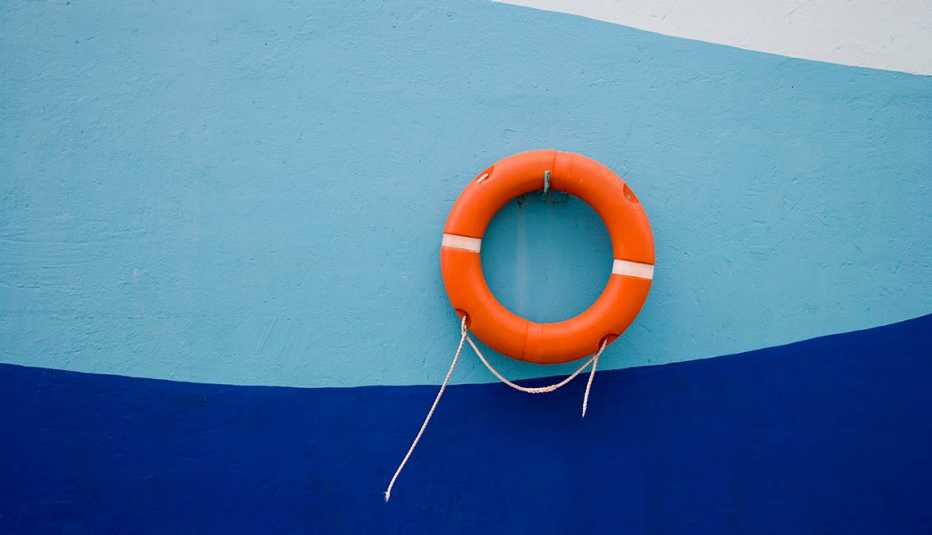
5 Illnesses You Can Get on a Cruise
The focus has been on COVID, but it’s not the only one
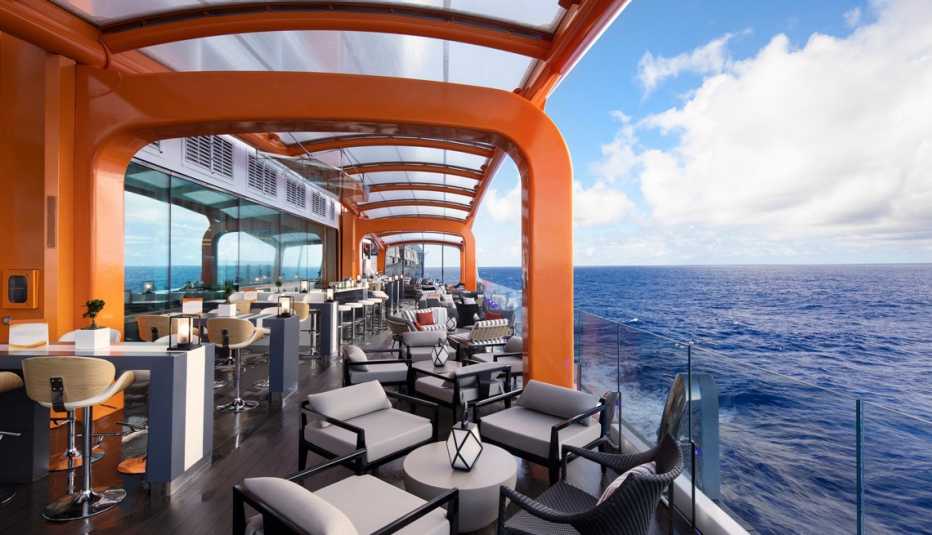
How You Can Stay Healthy While at Sea
Cruise ships have adapted to a post-pandemic world

Top New Cruises
If you’re ready for a vacation on the high seas, you can set sail as early as May on one of these exciting new passenger vessels
Or Call: 1-800-675-4318
Enter a valid from location
Enter a valid to location
Enter a valid departing date
Enter a valid returning date
Age of children:
Child under 2 must either sit in laps or in seats:
+ Add Another Flight
Enter a valid destination location
Enter a valid checking in date
Enter a valid checking out date
Occupants of Room
Occupants of Room 1:
Occupants of Room 2:
Occupants of Room 3:
Occupants of Room 4:
Occupants of Room 5:
Occupants of Room 6:
Occupants of Room 7:
Occupants of Room 8:
Enter a valid date
You didn't specify child's age
There are children in room 1 without an adult
You didn't specify child's age for room 1
There are children in room 2 without an adult
You didn't specify child's age in room 2
There are children in room 3 without an adult
You didn't specify child's age in room 3
There are children in room 4 without an adult
You didn't specify child's age in room 4
There are children in room 5 without an adult
You didn't specify child's age in room 5
You have more than 6 people total
Please select a trip duration less than 28 days
There must be at least 1 traveler (age 12+) for each infant in a lap
Enter a valid From location
Enter a valid start date
Enter a valid drop location
Enter a valid drop off date
Select a valid to location
Select a month
Enter a valid going to location
Enter a valid from date
Enter a valid to date
AARP Value & Member Benefits

Hurtigruten Expeditions
5% off cruise fares and a €100 per person onboard credit

AARP Vacation Ideas
Ideas for every type of trip – from cruises to road trips

AARP Travel Center Powered by Expedia: Car Rentals
Up to 30% off select car rentals

AARP® Staying Sharp®
Activities, recipes, challenges and more with full access to AARP Staying Sharp®
SAVE MONEY WITH THESE LIMITED-TIME OFFERS
- Today's news
- Reviews and deals
- Climate change
- 2024 election
- Fall allergies
- Health news
- Mental health
- Sexual health
- Family health
- So mini ways
- Unapologetically
- Buying guides
Entertainment
- How to Watch
- My watchlist
- Stock market
- Biden economy
- Personal finance
- Stocks: most active
- Stocks: gainers
- Stocks: losers
- Trending tickers
- World indices
- US Treasury bonds
- Top mutual funds
- Highest open interest
- Highest implied volatility
- Currency converter
- Basic materials
- Communication services
- Consumer cyclical
- Consumer defensive
- Financial services
- Industrials
- Real estate
- Mutual funds
- Credit cards
- Credit card rates
- Balance transfer credit cards
- Business credit cards
- Cash back credit cards
- Rewards credit cards
- Travel credit cards
- Checking accounts
- Online checking accounts
- High-yield savings accounts
- Money market accounts
- Personal loans
- Student loans
- Car insurance
- Home buying
- Options pit
- Investment ideas
- Research reports
- Fantasy football
- Pro Pick 'Em
- College Pick 'Em
- Fantasy baseball
- Fantasy hockey
- Fantasy basketball
- Download the app
- Daily fantasy
- Scores and schedules
- GameChannel
- World Baseball Classic
- Premier League
- CONCACAF League
- Champions League
- Motorsports
- Horse racing
- Newsletters
New on Yahoo

- CA Privacy Notice
What is norovirus and how do you treat it? What to know about the ‘cruise ship virus’
Summer travel has returned and people are flocking to cruises again, with more than 31.5 million passengers expected to sail in 2023.
But sometimes people get sick while onboard.
Upset stomach or nausea? It could be sea sickness. Food poisoning. Or maybe it’s norovirus, a contagious virus that often keeps you at the toilet for several days. Some people know it as the “cruise ship virus” because it’s often the cause of over 90% of diarrhea outbreaks on cruise ships, according to the Centers for Disease Control and Prevention.
So far, cruise lines have reported 13 separate norovirus outbreaks to the CDC through the six months ending in June. It’s the most number of reported norovirus outbreaks on cruise ships since 2012, when there were 16.
What is norovirus? And how do you treat it?
Here’s what to know:
What is norovirus?
▪ Sometimes known as the “stomach flu” or “stomach bug,” noroviruses are a very contagious virus that often causes vomiting, diarrhea, nausea and stomach pain. However, the virus is not related to the flu, which is caused by influenza.
How common is it?
▪ Norovirus is the “leading cause of vomiting and diarrhea and food-borne illness in the United States,” with more than 2,500 norovirus outbreaks reported every year, according to the CDC.
▪ The federal health agency says that the virus, on average, causes 19 to 21 million illnesses in the U.S. each year. While most people recover, the virus does cause about 900 deaths a year, mostly in adults 65 and older.
▪ While the virus has garnered the nickname “cruise ship virus,” in reality, norovirus outbreaks on cruise ships account for only 1% of all reported norovirus outbreaks, the CDC says. In fact, acute gastrointestinal illness is fairly uncommon on cruise ships, the agency says.
How does norovirus spread?
▪ Norovirus spreads easily and can make anyone ill, with symptoms usually lasting one to three days. The virus most often spreads in closed and crowded environments, such as hospitals, nursing homes, child care centers, school and cruise ships, according to the Mayo Clinic.
▪ You can get norovirus in a variety of ways, such as by eating or drinking contaminated food and drinks, touching an infected surface and then touching your mouth or having direct contact with someone ill from the virus, according to the CDC.
How is it treated?
▪ While there is no specific treatment to treat the illness, the CDC recommends drinking lots of water or other drinks, like sports drinks, that don’t have caffeine or alcohol to help avoid dehydration.
▪ The best way to reduce your risk of falling ill? Wash your hands often with soap and water. And while you might still have a closet full of hand sanitizer from the COVID days, keep in mind that hand sanitizer doesn’t work well against norovirus.
Recommended Stories
Andrew siciliano, face of 'red zone channel,' and others out at nfl network, per report.
NFL Network is laying off four of its most popular and talented on-air personalities.
Stephen Strasburg retires after years of injury struggles, and months-long standoff with Nationals
Stephen Strasburg made eight starts after signing a $245 million contract in 2019.
Rashee Rice didn't learn from the past, maybe other NFL players will learn from Rice
Rashee Rice should have taken a lesson from recent history.
Why gas prices in California ‘have gone ballistic'
California's gas prices have surged more than the rest of the nation as the state grapples with less output from its refineries.
Vontae Davis, former NFL star, found dead in Miami home at age 35
Davis published a children's book about his life in 2019
NFL mock draft: Patriots trade out of No. 3 but still get their QB, and what do Bills do after Stefon Diggs trade?
As we turn toward the draft, here's Charles McDonald and Nate Tice's latest lively mock.
Warriors take Rockets' Tari Eason to task for wearing taunting T-shirt on bench
The Warriors blew out the Rockets 133-110.
Royals owner's wife warns team could move to Kansas after ballpark funding proposal voted down
Marny Sherman, the wife of Kansas City Royals owner John Sherman, warned that Missouri could lose both the Royals and Kansas City Chiefs after a stadium funding proposal was voted down.
Welcome to MLB: Padres rookie strikes out on pitch to helmet, which ump got wrong
Graham Pauley has had better at-bats.
Rashee Rice apologizes for 'my part' in crash while injured couple reportedly lawyer up
Rice reportedly owned the Corvette and leased the Lamborghini involved in the crash.
US economy has Wall Street 'borderline speechless' after blowout March jobs report
The March jobs report was the latest piece of economic data to surprise Wall Street analysts and send stocks rallying.
USWNT captain Lindsey Horan and Alex Morgan issue statement after Korbin Albert apologizes for anti-LGBTQ content
Morgan alluded to some "hard conversations" with Albert over the past week.
The A’s are going to Sacramento, a Marlins fire sale & the good, the bad and the Uggla
Jake Mintz & Jordan Shusterman talk about the A’s moving to Sacramento, the Marlins possibly becoming sellers very soon and give their good, bad and Uggla’s from this week in baseball.
ESPN broadcast tips Dodgers pitches vs. Cardinals during in-game interview with Kiké Hernandez
Hernandez's PitchCom speaker was broadcast for all the world to hear.
A's reach deal to play in Sacramento while waiting for Las Vegas stadium
The A's will head to Las Vegas by way of Sacramento.
MLB and players union exchange barbs over pitch clock after brutal run of pitcher injuries
Shane Bieber and Spencer Strider both have damaged elbows. It's not a good time to be a pitcher right now.
Fantasy Baseball Waiver Wire: Brice Turang leads first batch of early-season pickups
It's time to boost those fantasy baseball rosters. Andy Behrens offers eight players to consider adding in all leagues.
5 hitters surprising early this MLB season, including the Astros' Yainer Diaz and Yankees' Anthony Volpe
If these five hitters can sustain their hot starts, their 2024 breakouts could be difference-makers for their teams.
In new surroundings and a very different role, LSU's Hailey Van Lith has gone through a mental evolution
Van Lith is a different player in a different place than a year ago, and now she's in position to win a championship after watching LSU cut down the nets last season.
Dallas mayor hints at bringing Chiefs to Cowboys territory after stadium vote fails
This obviously isn't happening.
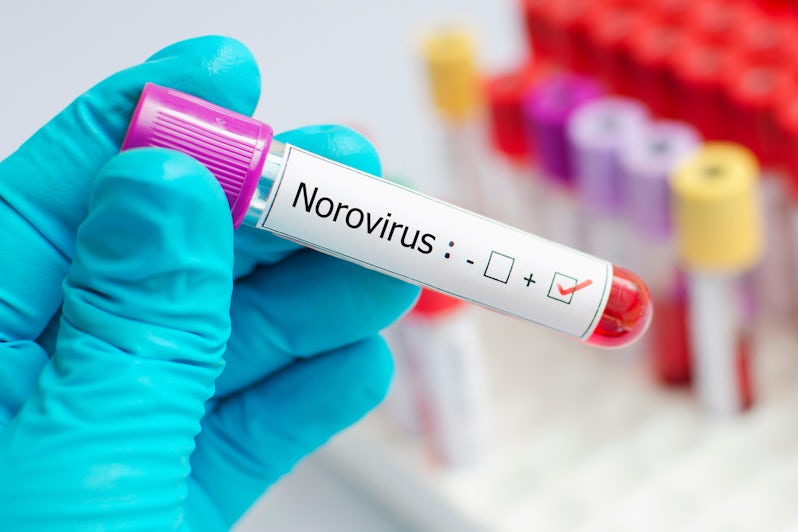
Demystifying the Myths of Norovirus

Cruise industry executives tell us that they're still shaking their heads over general confusion about the easily communicable virus. Here, we tackle the most common myths we've heard one at a time.
**Want to know more? Check out Norovirus: What You Need to Know .
It is not safe to cruise because of Norovirus.
Reality: The epidemiologists at the Centers for Disease Control and Prevention say that's absolutely untrue. Says David Forney, chief of the CDC's Vessel Sanitation Program, which oversees health and sanitation aboard ships that visit U.S. ports, "it is perfectly safe to go on cruise ships. The standard by which they (cruise lines) are held for sanitation is the highest in the world."
In fact, cruise lines have developed proactive procedures to ensure that passengers on voyages, particularly throughout the winter season, don't get sick. For example, Royal Caribbean International's multi-pronged strategy includes a task force to oversee health and sanitation efforts, a three-stage illness-prevention program and enhanced passenger communication efforts.
Vessels that experience outbreaks are "sick" ships.
Reality: Not at all. In most if not all cases, the ships involved have scored very high on the CDC's notoriously strenuous vessel sanitation inspection. It wasn't the ships that were sick; it was the folks who came onboard and passed the illness around. Norovirus is, according to the Centers for Disease Control and Prevention, one of the most contagious gastrointestinal illnesses in the world.
Norovirus is a cruise ship phenomenon.
Reality: That's simply not true. Norovirus is second to the common cold in reported illnesses, impacting millions of people around the world each year. Norovirus, previously known as Norwalk Virus, was actually named for a land-based outbreak in Norwalk, Ohio, that originally occurred some 30 years ago. It can break out at any time of the year.
There is no way cruise ships can battle the spread of Norovirus.
Reality: Again, not true. There are intense -- and even more intense -- cleaning and service protocols that cruise lines follow when the possibility of a spreadable virus onboard exists. These protocols have only become more, not less, sophisticated over time. A Princess Cruises spokeswoman says, "Princess staff and crew are trained to be extremely vigilant regarding passenger health, and the line operates a thorough health monitoring system. Employees receive special training and utilize a rigorous sanitary protocol that meets or exceeds CDC requirements." Medical facilities on many ships are even equipped to test specimen samples onboard -- which means that doctors can get results (and implement necessary measures) much more quickly than in the past.
Also in place are service-related mandates; many buffet areas are no longer serve-yourself, passengers get a "welcome letter" offering stay-healthy tips about washing hands frequently, and those who do contract the disease are encouraged to stay in their cabin for a day or two so as not to spread Norovirus when it's at its most communicable. The second, more intense category involves taking the ship out of commission for a massive cleaning. Back in the fall of 2002, Holland America couldn't break the cycle after four cruises on Amsterdam despite enhanced cleaning; it took the ship out of commission and embarked on an ambitious program. This included sanitizing television remote controls and bibles, disinfecting poker chips and currency, discarding every pillow -- more than 2,500 -- and steam cleaning carpets. The end result? Amsterdam's follow-up cruise was, thankfully, Norovirus-free.
Norovirus is caused by uncooked food.
Reality: That can be a cause, but Norovirus is typically spread through person-to-person contact.
Norovirus outbreaks only occur in winter.
Reality: It's true that Noro outbreaks tend to spike in the winter -- earning it the nickname of "winter vomiting bug" in the U.K. According to a 2013 Centers for Disease Control and Prevention study, "Endemic norovirus disease occurs year round but exhibits a pronounced winter peak and increases by [approximately] 50 percent during years in which pandemic strains emerge." The study found that the majority of Norovirus occurrences take place from October through March. A likely cause is people spending more times indoors (to escape the cold, no doubt), which facilitates the spread of germs.
However, that does not mean you cannot contract Norovirus at other times of year, so it's best to be vigilant about hygiene throughout the year.
© 1995— 2024 , The Independent Traveler, Inc.

- Cruise News
First Norovirus Wave of 2024 Strikes Cruise Ship

Andrea Santillan
- January 16, 2024
Barely two weeks into the new year, the first cruise ship norovirus outbreak of 2024 has already been reported.

During a Celebrity Cruise voyage from January 3 to 12, more than 3% of passengers and under 1% of crew members were confirmed to have norovirus.
Out of 2,056 passengers, 92 were diagnosed with gastrointestinal illness based on tests done by the Centers for Disease Control and Prevention (CDC).
Meanwhile, 68 guests who had fallen ill experienced symptoms like diarrhea and vomiting. Among the 948 crew members, 8 of them had the virus.
The outbreak happened onboard the Celebrity Constellation as it toured guests around Cozumel, Costa Maya, New Orleans, and Belize.
The cruise line responded with the quick deployment of sanitation measures which included more frequent cleaning and disinfection activities. It also quarantined individuals who displayed symptoms.
What You Should Know About the Norovirus

Norovirus is easily transmitted when an uninfected person comes into contact with contaminated surfaces and tainted food and water. Infection can also spread through the vomit or fecal matter of someone who has it. After ingesting the virus, symptoms can manifest as early as 12 hours upon exposure or after one to two days.
Its most common symptoms are vomiting, diarrhea, and stomach cramps. Less common signs of norovirus are headaches, muscle aches, chills, and fever.
The good news is the infection typically goes away within 1 to 3 days, even without significant medical intervention. Cruise passengers are advised to adopt more stringent hygiene practices to minimize the risk of catching it.
How Common is the Norovirus During Cruises?
Last year, the CDC recorded 14 outbreaks, 13 of which were due to the norovirus. Though common, an epidemiology professor from Emory University assured USA Today that norovirus cases onboard cruise ships were a “ tiny minority of norovirus outbreaks .” According to Professor Ben Lopman, the majority of cases happen in healthcare facilities like nursing homes.
Because of its highly infectious nature, the source of the outbreaks is seldom identified as was the case with the 14th outbreak of 2023 aboard Virgin Voyages’ Scarlet Lady.
Recent Posts
Help needed after cruise passenger with dementia goes missing in cozumel, alaska cruise port will enforce passenger limits starting in 2026, passenger reportedly jumps from cruise ship in front of family, carnival vista review 2024 + cruise news [podcast], share this post, related posts.

Port Clears Cruise Ship to Leave After Identifying 69 Fake Visas

Hydration Economics: Carnival Hikes Bottled Water Prices by 25%

Bringing you 15 years of cruise industry experience. Cruise Radio prioritizes well-balanced cruise news coverage and accurate reporting, paired with ship reviews and tips.
Quick links
Cruise Radio, LLC © Copyright 2009-2024 | Website Designed By Insider Perks, Inc

The 'Cruise Ship Virus' Has Come Ashore
Each year, norovirus causes an average of 900 deaths and 19-21 million illnesses.
By J. Darrel Hicks, Contributing Writer
It’s that time of year again when the misery of norovirus strikes the United States. Each year, the pathogen causes an average of 900 deaths, 109,000 hospitalizations, 465,000 emergency room visits, and 19 to 21 million illnesses, according to the U.S. Centers for Disease Control and Prevention (CDC).
The agency reports national norovirus trends as three-week moving averages of positive test rates. So far in the 2023–’24 season, infections peaked the week of Dec. 30, 2023, at 13 percent positivity. Rates have since oscillated, with 12.3 percent positivity the week of Feb. 17, 2024. Norovirus is commonly called stomach flu, though it is unrelated to influenza. Its nicknames include winter vomiting disease and the cruise ship virus because it spreads easily among people in close quarters.
Norovirus can survive on surfaces for two weeks. Cleaning and decontaminating surfaces is critical to removing and destroying the virus. Due to misinformation or ignorance, norovirus can break out in any facility where the cleaning staff is not properly equipped or trained for proper clean up. Here is what environmental services managers and staffs need to know:
- The virus is airborne when people are projectile vomiting. The range of the particles carrying the virus is up to a 25-foot radius.
- The virus can live on an inanimate surface for up to two days and in water indefinitely.
- The virus is very tiny and difficult to eradicate with normal cleaning and disinfection.
- Cleaning staffs must be equipped with a disinfectant from EPA List G. Limit the search to products that are non-toxic, non-corrosive, dilutable and with a dwell time of one-two minutes
Related: Handwashing is Key to Prevent the Spread of Norovirus
Clean up .
Follow these steps to properly clean and reduce the spread of norovirus in the facility:
- Remove vomit or stool. Block-off and clear individuals from the exposed area immediately. Put on personal protective equipment — disposable gloves, N-95 mask and plastic apron — to reduce exposure to the virus. Use disposable absorbent material — paper towels, kitty litter, baking soda or disposable cloths — to soak up visible vomit or stool. Scrape up absorbent material containing vomit or stool. Dispose of soiled items, waste, and gloves in a plastic trash bag. Throw away disposable items within a 25-foot radius of vomit.
- Wash hands. Put on clean gloves. Take disposable cloths soaked in soapy water and wipe up the remaining vomit or stool. Rinse the surface well with clean cloths soaked in plain water.
- Wipe. Clean the area with dry paper towels and dispose of all soiled items and waste in a plastic trash bag.
- Isolate. Isolate the contaminated area for two hours because norovirus particles can remain in the air for two hours after an incident.
Decontaminate
The soiled area needs to be decontaminated. Use a high denier microfiber cloth for final disinfection using a product from EPA List G after the bulk has been picked up. Use an ultraviolet (UV) light with the ambient light down low to look for splatters of vomit. If body fluids are on soft, nonporous surfaces such as bath linens, patient bedding, upholstered furniture, curtains or carpet, they cannot be disinfected. Launder the items that allow it. Other items that cannot go in a washing machine should be hot water extracted. Inspect the area with UV light for thoroughness of the decontamination process.
J. Darrel Hicks, BA, MESRE, CHESP, Certificate of Mastery in Infection Prevention, is the past president of the Healthcare Surfaces Institute. Hicks is nationally recognized as a subject matter expert in infection prevention and control as it relates to cleaning. He is the owner and principal of Safe, Clean and Disinfected. His enterprise specializes in B2B consulting, webinar presentations, seminars and facility consulting services related to cleaning and disinfection. He can be reached at [email protected] , or learn more at www.darrelhicks.com .
April 3, 2024
Topic Area: Infection Control
Recent Posts
Wilsonart products used in construction of penn pavilion.
One of the products used was Wilsonart's Solid Surface.
Perceptions of Healthcare Safety Are Mixed: Report
While healthcare safety outcomes improve, patients and employees share mixed views of overall safety.
RadNet and Providence Health System Announce Joint Venture
The new joint venture is comprised of seven outpatient imaging centers.
UNC Hospitals & School of Medicine Target of Phishing Attack
The phishing attack occurred on February 1.
News & Updates | Webcast Alerts Building Technologies | & More!
All fields are required. This site is protected by reCAPTCHA and the Google Privacy Policy and Terms of Service apply.
Outbreak Updates for International Cruise Ships
The Vessel Sanitation Program (VSP) requires cruise ships to log and report the number of passengers and crew who say they have symptoms of gastrointestinal illness. Learn more about illnesses and outbreaks reported to VSP and find information about outbreaks of gastrointestinal illness on cruise ships.
Medical staff on cruise ships under U.S. jurisdiction must send gastrointestinal illness case reports to VSP at specific times:
- Before arriving to a U.S. port from a foreign port. This report is required even when there are no cases of gastrointestinal illness. Cruise ship staff send this report between 24 and 36 hours before the ship arrives at a U.S. port.
- When 2% or more of the passengers or crew have gastrointestinal illness. Cruise ship staff send this report any time the ship is in the United States or within 15 days of arriving at a U.S. port.
- If 3% or more of the passengers or crew have gastrointestinal illness.
VSP posts cruise ship outbreaks when they meet all of the following criteria:
- Are on ships under VSP jurisdiction (see about VSP ).
- Are on ships carrying 100 or more passengers.
- Are on voyages from 3-21 days long.
- Are on voyages where 3% or more of passengers or crew report symptoms of gastrointestinal illness to the ship’s medical staff.
VSP may also post information on gastrointestinal illness outbreaks of public health significance that do not necessarily meet the above criteria.
Important Notes
Data on this page are from ship surveillance reports and from CDC-led investigations.
- The gastrointestinal illness cases reported are totals for the entire voyage.
- These cases do not represent the number of active (symptomatic) cases of gastrointestinal illness at any given port of call or at disembarkation.
- CDC has not verified all the case numbers represented in the following updates.
Learn how passengers can protect themselves with these tips for healthy cruising .
Find more information about gastrointestinal illness outbreaks on land and at sea.
Top of Page
*There were an unknown but significant number of passenger cases who reported their illness by phone to the medical facility onboard but were not seen in a timely manner and disembarked the ship
- Inspection Reports
- About Inspections
- Cruise Ship Outbreak Updates
- About Noroviruses on Cruise Ships
- VSP Operations Manual [PDF – 5 MB]
- VSP Construction Guidelines [PDF – 4 MB]
- Illness Prevention Information
- Publications
Exit Notification / Disclaimer Policy
- The Centers for Disease Control and Prevention (CDC) cannot attest to the accuracy of a non-federal website.
- Linking to a non-federal website does not constitute an endorsement by CDC or any of its employees of the sponsors or the information and products presented on the website.
- You will be subject to the destination website's privacy policy when you follow the link.
- CDC is not responsible for Section 508 compliance (accessibility) on other federal or private website.
Norovirus infection
On this page, when to see a doctor, risk factors, complications.
Norovirus infection can cause severe vomiting and diarrhea that start suddenly. Noroviruses are highly contagious. They commonly spread through food or water that is contaminated during preparation or through contaminated surfaces. Noroviruses can also spread through close contact with a person who has norovirus infection.
Diarrhea, stomach pain and vomiting typically begin 12 to 48 hours after exposure. Norovirus infection symptoms usually last 1 to 3 days. Most people recover completely without treatment. However, for some people — especially young children, older adults and people with other medical conditions — vomiting and diarrhea can be severely dehydrating and require medical attention.
Norovirus infection occurs most frequently in closed and crowded environments. Examples include hospitals, nursing homes, child care centers, schools and cruise ships.
Signs and symptoms of norovirus infection may start suddenly and include:
- Stomach pain or cramps
- Watery or loose diarrhea
- Feeling ill
- Low-grade fever
- Muscle pain
Signs and symptoms usually begin 12 to 48 hours after your first exposure to a norovirus and last 1 to 3 days. You can continue to shed virus in your stool for several weeks after recovery. This shedding can last weeks to months if you have another medical condition.
Some people with norovirus infection may show no signs or symptoms. However, they're still contagious and can spread the virus to others.
Seek medical attention if you develop diarrhea that doesn't go away within several days. Also call your health care provider if you experience severe vomiting, bloody stools, stomach pain or dehydration.
Noroviruses are highly contagious. That means the norovirus infection can easily spread to others. The virus is shed in stool and vomit. You can spread the virus from the time you first have symptoms of illness until several days after you recover. Noroviruses can stay on surfaces and objects for days or weeks.
You can get norovirus infection by:
- Eating contaminated food
- Drinking contaminated water
- Touching your hand to your mouth after your hand has been in contact with a contaminated surface or object
- Being in close contact with a person who has norovirus infection
Noroviruses are difficult to kill because they can withstand hot and cold temperatures and many disinfectants.
Risk factors for becoming infected with a norovirus include:
- Eating in a place where food has been handled by someone with norovirus infection or the food has been in contact with contaminated water or surfaces
- Attending preschool or a child care center
- Living in close quarters, such as in nursing homes
- Staying in hotels, resorts, cruise ships or other destinations with many people in close quarters
- Having contact with someone who has norovirus infection
For most people, norovirus infection usually clears up within a few days and isn't life-threatening. But in some people — especially young children; older adults; and people with weakened immune systems or other medical conditions or who are pregnant — norovirus infection can be severe. Norovirus infection can cause severe dehydration and even death.
Warning signs of dehydration include:
- Dry mouth and throat
- Listlessness
- Decreased urine output
Children who are dehydrated might cry with few or no tears. They might be unusually sleepy or fussy.
Norovirus infection is highly contagious. There are many types of noroviruses. Anyone can get norovirus infection more than once.
To prevent norovirus infection:
- Wash your hands thoroughly with soap and water for at least 20 seconds, especially after using the toilet or changing a diaper and before you prepare food and eat or drink. Alcohol-based hand sanitizers aren't as effective against noroviruses as using soap and water.
- Avoid contaminated food and water, including food that could have been prepared by someone who was sick.
- Wash fruits and vegetables before eating.
- Cook seafood thoroughly.
- Disinfect surfaces that might have been contaminated. Wear gloves and use a chlorine bleach solution or a disinfectant that is effective against noroviruses.
- Use caution when traveling. If you're traveling to areas with a high risk of norovirus infection, consider eating only cooked foods, drinking only hot or carbonated beverages, and avoiding food sold by street vendors.
To help prevent norovirus infection spread, during illness and for 2 to 3 days after your symptoms end:
- Avoid contact with others as much as possible.
- Wash your hands thoroughly with soap and water.
- Stay home from work. Children should stay home from school or child care.
- Avoid handling food and items to be used by other people. Disinfect contaminated surfaces with a disinfectant effective against noroviruses.
- Dispose of vomit and stool carefully. Wearing disposable gloves, soak up material with disposable towels. Disturb soiled material as little as possible to avoid spreading noroviruses by air. Place soiled items in plastic bags and place them in the trash. Remove and wash clothes and linens that may be contaminated.
- Avoid traveling until 2 to 3 days after your symptoms are gone.
Mar 04, 2022
- Norovirus illness: Key facts. Centers for Disease Control and Prevention. https://www.cdc.gov/norovirus/index.html. Accessed Oct. 29, 2021.
- AskMayoExpert. Norovirus. Mayo Clinic; 2021.
- Feldman M, et al., eds. Infectious enteritis and proctocolitis. In: Sleisenger and Fordtran's Gastrointestinal and Liver Disease: Pathophysiology, Diagnosis, Management. 11th ed. Elsevier; 2021. https://www.clinicalkey.com. Accessed Oct. 29, 2021.
- O'Ryan MG. Norovirus. https://www.uptodate.com/contents/search. Accessed Oct. 29, 2021.
- How you treat norovirus. Centers for Disease Control and Prevention. https://www.cdc.gov/norovirus/about/treatment.html. Accessed Oct. 29, 2021.
- Preventing norovirus. Centers for Disease Control and Prevention. https://www.cdc.gov/norovirus/about/prevention.html. Accessed Oct. 29, 2021.
- The symptoms of norovirus. Centers for Disease Control and Prevention. https://www.cdc.gov/norovirus/about/symptoms.html. Accessed Oct. 29, 2021.
- Ferri FF. Gastroenteritis. In: Ferri's Clinical Advisor 2022. Elsevier; 2022. https://www.clinicalkey.com. Accessed Nov. 1, 2021.
- Viral gastroenteritis ("stomach flu"). National Institute of Diabetes and Digestive and Kidney Diseases. https://www.niddk.nih.gov/health-information/digestive-diseases/viral-gastroenteritis/all-content. Accessed Nov. 1, 2021.
- How norovirus spreads. Centers for Disease Control and Prevention. https://www.cdc.gov/norovirus/about/transmission.html. Accessed Nov. 1, 2021.
- When and how to wash your hands. Centers for Disease Control and Prevention. https://www.cdc.gov/handwashing/when-how-handwashing.html. Accessed Nov. 1, 2021.
- Tosh PK (expert opinion). Mayo Clinic. Nov. 2, 2021.
- Diseases & Conditions
- Norovirus infection symptoms & causes
News from Mayo Clinic

CON-XXXXXXXX
Your gift holds great power – donate today!
Make your tax-deductible gift and be a part of the cutting-edge research and care that's changing medicine.

Crying Myself to Sleep on the Biggest Cruise Ship Ever
Seven agonizing nights aboard the Icon of the Seas

Listen to this article
Listen to more stories on curio
Updated at 2:44 p.m. ET on April 6, 2024.
This article was featured in the One Story to Read Today newsletter. Sign up for it here .
MY FIRST GLIMPSE of Royal Caribbean’s Icon of the Seas, from the window of an approaching Miami cab, brings on a feeling of vertigo, nausea, amazement, and distress. I shut my eyes in defense, as my brain tells my optic nerve to try again.
The ship makes no sense, vertically or horizontally. It makes no sense on sea, or on land, or in outer space. It looks like a hodgepodge of domes and minarets, tubes and canopies, like Istanbul had it been designed by idiots. Vibrant, oversignifying colors are stacked upon other such colors, decks perched over still more decks; the only comfort is a row of lifeboats ringing its perimeter. There is no imposed order, no cogent thought, and, for those who do not harbor a totalitarian sense of gigantomania, no visual mercy. This is the biggest cruise ship ever built, and I have been tasked with witnessing its inaugural voyage.
Explore the May 2024 Issue
Check out more from this issue and find your next story to read.
“Author embarks on their first cruise-ship voyage” has been a staple of American essay writing for almost three decades, beginning with David Foster Wallace’s “A Supposedly Fun Thing I’ll Never Do Again,” which was first published in 1996 under the title “Shipping Out.” Since then, many admirable writers have widened and diversified the genre. Usually the essayist commissioned to take to the sea is in their first or second flush of youth and is ready to sharpen their wit against the hull of the offending vessel. I am 51, old and tired, having seen much of the world as a former travel journalist, and mostly what I do in both life and prose is shrug while muttering to my imaginary dachshund, “This too shall pass.” But the Icon of the Seas will not countenance a shrug. The Icon of the Seas is the Linda Loman of cruise ships, exclaiming that attention must be paid. And here I am in late January with my one piece of luggage and useless gray winter jacket and passport, zipping through the Port of Miami en route to the gangway that will separate me from the bulk of North America for more than seven days, ready to pay it in full.
The aforementioned gangway opens up directly onto a thriving mall (I will soon learn it is imperiously called the “Royal Promenade”), presently filled with yapping passengers beneath a ceiling studded with balloons ready to drop. Crew members from every part of the global South, as well as a few Balkans, are shepherding us along while pressing flutes of champagne into our hands. By a humming Starbucks, I drink as many of these as I can and prepare to find my cabin. I show my blue Suite Sky SeaPass Card (more on this later, much more) to a smiling woman from the Philippines, and she tells me to go “aft.” Which is where, now? As someone who has rarely sailed on a vessel grander than the Staten Island Ferry, I am confused. It turns out that the aft is the stern of the ship, or, for those of us who don’t know what a stern or an aft are, its ass. The nose of the ship, responsible for separating the waves before it, is also called a bow, and is marked for passengers as the FWD , or forward. The part of the contemporary sailing vessel where the malls are clustered is called the midship. I trust that you have enjoyed this nautical lesson.
I ascend via elevator to my suite on Deck 11. This is where I encounter my first terrible surprise. My suite windows and balcony do not face the ocean. Instead, they look out onto another shopping mall. This mall is the one that’s called Central Park, perhaps in homage to the Olmsted-designed bit of greenery in the middle of my hometown. Although on land I would be delighted to own a suite with Central Park views, here I am deeply depressed. To sail on a ship and not wake up to a vast blue carpet of ocean? Unthinkable.
Allow me a brief preamble here. The story you are reading was commissioned at a moment when most staterooms on the Icon were sold out. In fact, so enthralled by the prospect of this voyage were hard-core mariners that the ship’s entire inventory of guest rooms (the Icon can accommodate up to 7,600 passengers, but its inaugural journey was reduced to 5,000 or so for a less crowded experience) was almost immediately sold out. Hence, this publication was faced with the shocking prospect of paying nearly $19,000 to procure for this solitary passenger an entire suite—not including drinking expenses—all for the privilege of bringing you this article. But the suite in question doesn’t even have a view of the ocean! I sit down hard on my soft bed. Nineteen thousand dollars for this .

The viewless suite does have its pluses. In addition to all the Malin+Goetz products in my dual bathrooms, I am granted use of a dedicated Suite Deck lounge; access to Coastal Kitchen, a superior restaurant for Suites passengers; complimentary VOOM SM Surf & Stream (“the fastest Internet at Sea”) “for one device per person for the whole cruise duration”; a pair of bathrobes (one of which comes prestained with what looks like a large expectoration by the greenest lizard on Earth); and use of the Grove Suite Sun, an area on Decks 18 and 19 with food and deck chairs reserved exclusively for Suite passengers. I also get reserved seating for a performance of The Wizard of Oz , an ice-skating tribute to the periodic table, and similar provocations. The very color of my Suite Sky SeaPass Card, an oceanic blue as opposed to the cloying royal purple of the standard non-Suite passenger, will soon provoke envy and admiration. But as high as my status may be, there are those on board who have much higher status still, and I will soon learn to bow before them.
In preparation for sailing, I have “priced in,” as they say on Wall Street, the possibility that I may come from a somewhat different monde than many of the other cruisers. Without falling into stereotypes or preconceptions, I prepare myself for a friendly outspokenness on the part of my fellow seafarers that may not comply with modern DEI standards. I believe in meeting people halfway, and so the day before flying down to Miami, I visited what remains of Little Italy to purchase a popular T-shirt that reads DADDY’S LITTLE MEATBALL across the breast in the colors of the Italian flag. My wife recommended that I bring one of my many T-shirts featuring Snoopy and the Peanuts gang, as all Americans love the beagle and his friends. But I naively thought that my meatball T-shirt would be more suitable for conversation-starting. “Oh, and who is your ‘daddy’?” some might ask upon seeing it. “And how long have you been his ‘little meatball’?” And so on.
I put on my meatball T-shirt and head for one of the dining rooms to get a late lunch. In the elevator, I stick out my chest for all to read the funny legend upon it, but soon I realize that despite its burnished tricolor letters, no one takes note. More to the point, no one takes note of me. Despite my attempts at bridge building, the very sight of me (small, ethnic, without a cap bearing the name of a football team) elicits no reaction from other passengers. Most often, they will small-talk over me as if I don’t exist. This brings to mind the travails of David Foster Wallace , who felt so ostracized by his fellow passengers that he retreated to his cabin for much of his voyage. And Wallace was raised primarily in the Midwest and was a much larger, more American-looking meatball than I am. If he couldn’t talk to these people, how will I? What if I leave this ship without making any friends at all, despite my T-shirt? I am a social creature, and the prospect of seven days alone and apart is saddening. Wallace’s stateroom, at least, had a view of the ocean, a kind of cheap eternity.
Worse awaits me in the dining room. This is a large, multichandeliered room where I attended my safety training (I was shown how to put on a flotation vest; it is a very simple procedure). But the maître d’ politely refuses me entry in an English that seems to verge on another language. “I’m sorry, this is only for pendejos ,” he seems to be saying. I push back politely and he repeats himself. Pendejos ? Piranhas? There’s some kind of P-word to which I am not attuned. Meanwhile elderly passengers stream right past, powered by their limbs, walkers, and electric wheelchairs. “It is only pendejo dining today, sir.” “But I have a suite!” I say, already starting to catch on to the ship’s class system. He examines my card again. “But you are not a pendejo ,” he confirms. I am wearing a DADDY’S LITTLE MEATBALL T-shirt, I want to say to him. I am the essence of pendejo .
Eventually, I give up and head to the plebeian buffet on Deck 15, which has an aquatic-styled name I have now forgotten. Before gaining entry to this endless cornucopia of reheated food, one passes a washing station of many sinks and soap dispensers, and perhaps the most intriguing character on the entire ship. He is Mr. Washy Washy—or, according to his name tag, Nielbert of the Philippines—and he is dressed as a taco (on other occasions, I’ll see him dressed as a burger). Mr. Washy Washy performs an eponymous song in spirited, indeed flamboyant English: “Washy, washy, wash your hands, WASHY WASHY!” The dangers of norovirus and COVID on a cruise ship this size (a giant fellow ship was stricken with the former right after my voyage) makes Mr. Washy Washy an essential member of the crew. The problem lies with the food at the end of Washy’s rainbow. The buffet is groaning with what sounds like sophisticated dishes—marinated octopus, boiled egg with anchovy, chorizo, lobster claws—but every animal tastes tragically the same, as if there was only one creature available at the market, a “cruisipus” bred specifically for Royal Caribbean dining. The “vegetables” are no better. I pick up a tomato slice and look right through it. It tastes like cellophane. I sit alone, apart from the couples and parents with gaggles of children, as “We Are Family” echoes across the buffet space.
I may have failed to mention that all this time, the Icon of the Seas has not left port. As the fiery mango of the subtropical setting sun makes Miami’s condo skyline even more apocalyptic, the ship shoves off beneath a perfunctory display of fireworks. After the sun sets, in the far, dark distance, another circus-lit cruise ship ruptures the waves before us. We glance at it with pity, because it is by definition a smaller ship than our own. I am on Deck 15, outside the buffet and overlooking a bunch of pools (the Icon has seven of them), drinking a frilly drink that I got from one of the bars (the Icon has 15 of them), still too shy to speak to anyone, despite Sister Sledge’s assertion that all on the ship are somehow related.
Kim Brooks: On failing the family vacation
The ship’s passage away from Ron DeSantis’s Florida provides no frisson, no sense of developing “sea legs,” as the ship is too large to register the presence of waves unless a mighty wind adds significant chop. It is time for me to register the presence of the 5,000 passengers around me, even if they refuse to register mine. My fellow travelers have prepared for this trip with personally decorated T-shirts celebrating the importance of this voyage. The simplest ones say ICON INAUGURAL ’24 on the back and the family name on the front. Others attest to an over-the-top love of cruise ships: WARNING! MAY START TALKING ABOUT CRUISING . Still others are artisanally designed and celebrate lifetimes spent married while cruising (on ships, of course). A couple possibly in their 90s are wearing shirts whose backs feature a drawing of a cruise liner, two flamingos with ostensibly male and female characteristics, and the legend “ HUSBAND AND WIFE Cruising Partners FOR LIFE WE MAY NOT HAVE IT All Together BUT TOGETHER WE HAVE IT ALL .” (The words not in all caps have been written in cursive.) A real journalist or a more intrepid conversationalist would have gone up to the couple and asked them to explain the longevity of their marriage vis-à-vis their love of cruising. But instead I head to my mall suite, take off my meatball T-shirt, and allow the first tears of the cruise to roll down my cheeks slowly enough that I briefly fall asleep amid the moisture and salt.

I WAKE UP with a hangover. Oh God. Right. I cannot believe all of that happened last night. A name floats into my cobwebbed, nauseated brain: “Ayn Rand.” Jesus Christ.
I breakfast alone at the Coastal Kitchen. The coffee tastes fine and the eggs came out of a bird. The ship rolls slightly this morning; I can feel it in my thighs and my schlong, the parts of me that are most receptive to danger.
I had a dangerous conversation last night. After the sun set and we were at least 50 miles from shore (most modern cruise ships sail at about 23 miles an hour), I lay in bed softly hiccupping, my arms stretched out exactly like Jesus on the cross, the sound of the distant waves missing from my mall-facing suite, replaced by the hum of air-conditioning and children shouting in Spanish through the vents of my two bathrooms. I decided this passivity was unacceptable. As an immigrant, I feel duty-bound to complete the tasks I am paid for, which means reaching out and trying to understand my fellow cruisers. So I put on a normal James Perse T-shirt and headed for one of the bars on the Royal Promenade—the Schooner Bar, it was called, if memory serves correctly.
I sat at the bar for a martini and two Negronis. An old man with thick, hairy forearms drank next to me, very silent and Hemingwaylike, while a dreadlocked piano player tinkled out a series of excellent Elton John covers. To my right, a young white couple—he in floral shorts, she in a light, summery miniskirt with a fearsome diamond ring, neither of them in football regalia—chatted with an elderly couple. Do it , I commanded myself. Open your mouth. Speak! Speak without being spoken to. Initiate. A sentence fragment caught my ear from the young woman, “Cherry Hill.” This is a suburb of Philadelphia in New Jersey, and I had once been there for a reading at a synagogue. “Excuse me,” I said gently to her. “Did you just mention Cherry Hill? It’s a lovely place.”
As it turned out, the couple now lived in Fort Lauderdale (the number of Floridians on the cruise surprised me, given that Southern Florida is itself a kind of cruise ship, albeit one slowly sinking), but soon they were talking with me exclusively—the man potbellied, with a chin like a hard-boiled egg; the woman as svelte as if she were one of the many Ukrainian members of the crew—the elderly couple next to them forgotten. This felt as groundbreaking as the first time I dared to address an American in his native tongue, as a child on a bus in Queens (“On my foot you are standing, Mister”).
“I don’t want to talk politics,” the man said. “But they’re going to eighty-six Biden and put Michelle in.”
I considered the contradictions of his opening conversational gambit, but decided to play along. “People like Michelle,” I said, testing the waters. The husband sneered, but the wife charitably put forward that the former first lady was “more personable” than Joe Biden. “They’re gonna eighty-six Biden,” the husband repeated. “He can’t put a sentence together.”
After I mentioned that I was a writer—though I presented myself as a writer of teleplays instead of novels and articles such as this one—the husband told me his favorite writer was Ayn Rand. “Ayn Rand, she came here with nothing,” the husband said. “I work with a lot of Cubans, so …” I wondered if I should mention what I usually do to ingratiate myself with Republicans or libertarians: the fact that my finances improved after pass-through corporations were taxed differently under Donald Trump. Instead, I ordered another drink and the couple did the same, and I told him that Rand and I were born in the same city, St. Petersburg/Leningrad, and that my family also came here with nothing. Now the bonding and drinking began in earnest, and several more rounds appeared. Until it all fell apart.
Read: Gary Shteyngart on watching Russian television for five days straight
My new friend, whom I will refer to as Ayn, called out to a buddy of his across the bar, and suddenly a young couple, both covered in tattoos, appeared next to us. “He fucking punked me,” Ayn’s frat-boy-like friend called out as he put his arm around Ayn, while his sizable partner sizzled up to Mrs. Rand. Both of them had a look I have never seen on land—their eyes projecting absence and enmity in equal measure. In the ’90s, I drank with Russian soldiers fresh from Chechnya and wandered the streets of wartime Zagreb, but I have never seen such undisguised hostility toward both me and perhaps the universe at large. I was briefly introduced to this psychopathic pair, but neither of them wanted to have anything to do with me, and the tattooed woman would not even reveal her Christian name to me (she pretended to have the same first name as Mrs. Rand). To impress his tattooed friends, Ayn made fun of the fact that as a television writer, I’d worked on the series Succession (which, it would turn out, practically nobody on the ship had watched), instead of the far more palatable, in his eyes, zombie drama of last year. And then my new friends drifted away from me into an angry private conversation—“He punked me!”—as I ordered another drink for myself, scared of the dead-eyed arrivals whose gaze never registered in the dim wattage of the Schooner Bar, whose terrifying voices and hollow laughs grated like unoiled gears against the crooning of “Goodbye Yellow Brick Road.”
But today is a new day for me and my hangover. After breakfast, I explore the ship’s so-called neighborhoods . There’s the AquaDome, where one can find a food hall and an acrobatic sound-and-light aquatic show. Central Park has a premium steak house, a sushi joint, and a used Rolex that can be bought for $8,000 on land here proudly offered at $17,000. There’s the aforementioned Royal Promenade, where I had drunk with the Rands, and where a pair of dueling pianos duel well into the night. There’s Surfside, a kids’ neighborhood full of sugary garbage, which looks out onto the frothy trail that the behemoth leaves behind itself. Thrill Island refers to the collection of tubes that clutter the ass of the ship and offer passengers six waterslides and a surfing simulation. There’s the Hideaway, an adult zone that plays music from a vomit-slathered, Brit-filled Alicante nightclub circa 1996 and proves a big favorite with groups of young Latin American customers. And, most hurtfully, there’s the Suite Neighborhood.

I say hurtfully because as a Suite passenger I should be here, though my particular suite is far from the others. Whereas I am stuck amid the riffraff of Deck 11, this section is on the highborn Decks 16 and 17, and in passing, I peek into the spacious, tall-ceilinged staterooms from the hallway, dazzled by the glint of the waves and sun. For $75,000, one multifloor suite even comes with its own slide between floors, so that a family may enjoy this particular terror in private. There is a quiet splendor to the Suite Neighborhood. I see fewer stickers and signs and drawings than in my own neighborhood—for example, MIKE AND DIANA PROUDLY SERVED U.S. MARINE CORPS RETIRED . No one here needs to announce their branch of service or rank; they are simply Suites, and this is where they belong. Once again, despite my hard work and perseverance, I have been disallowed from the true American elite. Once again, I am “Not our class, dear.” I am reminded of watching The Love Boat on my grandmother’s Zenith, which either was given to her or we found in the trash (I get our many malfunctioning Zeniths confused) and whose tube got so hot, I would put little chunks of government cheese on a thin tissue atop it to give our welfare treat a pleasant, Reagan-era gooeyness. I could not understand English well enough then to catch the nuances of that seafaring program, but I knew that there were differences in the status of the passengers, and that sometimes those differences made them sad. Still, this ship, this plenty—every few steps, there are complimentary nachos or milkshakes or gyros on offer—was the fatty fuel of my childhood dreams. If only I had remained a child.
I walk around the outdoor decks looking for company. There is a middle-aged African American couple who always seem to be asleep in each other’s arms, probably exhausted from the late capitalism they regularly encounter on land. There is far more diversity on this ship than I expected. Many couples are a testament to Loving v. Virginia , and there is a large group of folks whose T-shirts read MELANIN AT SEA / IT’S THE MELANIN FOR ME . I smile when I see them, but then some young kids from the group makes Mr. Washy Washy do a cruel, caricatured “Burger Dance” (today he is in his burger getup), and I think, Well, so much for intersectionality .
At the infinity pool on Deck 17, I spot some elderly women who could be ethnic and from my part of the world, and so I jump in. I am proved correct! Many of them seem to be originally from Queens (“Corona was still great when it was all Italian”), though they are now spread across the tristate area. We bond over the way “Ron-kon-koma” sounds when announced in Penn Station.
“Everyone is here for a different reason,” one of them tells me. She and her ex-husband last sailed together four years ago to prove to themselves that their marriage was truly over. Her 15-year-old son lost his virginity to “an Irish young lady” while their ship was moored in Ravenna, Italy. The gaggle of old-timers competes to tell me their favorite cruising stories and tips. “A guy proposed in Central Park a couple of years ago”—many Royal Caribbean ships apparently have this ridiculous communal area—“and she ran away screaming!” “If you’re diamond-class, you get four drinks for free.” “A different kind of passenger sails out of Bayonne.” (This, perhaps, is racially coded.) “Sometimes, if you tip the bartender $5, your next drink will be free.”
“Everyone’s here for a different reason,” the woman whose marriage ended on a cruise tells me again. “Some people are here for bad reasons—the drinkers and the gamblers. Some people are here for medical reasons.” I have seen more than a few oxygen tanks and at least one woman clearly undergoing very serious chemo. Some T-shirts celebrate good news about a cancer diagnosis. This might be someone’s last cruise or week on Earth. For these women, who have spent months, if not years, at sea, cruising is a ritual as well as a life cycle: first love, last love, marriage, divorce, death.
Read: The last place on Earth any tourist should go
I have talked with these women for so long, tonight I promise myself that after a sad solitary dinner I will not try to seek out company at the bars in the mall or the adult-themed Hideaway. I have enough material to fulfill my duties to this publication. As I approach my orphaned suite, I run into the aggro young people who stole Mr. and Mrs. Rand away from me the night before. The tattooed apparitions pass me without a glance. She is singing something violent about “Stuttering Stanley” (a character in a popular horror movie, as I discover with my complimentary VOOM SM Surf & Stream Internet at Sea) and he’s loudly shouting about “all the money I’ve lost,” presumably at the casino in the bowels of the ship.
So these bent psychos out of a Cormac McCarthy novel are angrily inhabiting my deck. As I mewl myself to sleep, I envision a limited series for HBO or some other streamer, a kind of low-rent White Lotus , where several aggressive couples conspire to throw a shy intellectual interloper overboard. I type the scenario into my phone. As I fall asleep, I think of what the woman who recently divorced her husband and whose son became a man through the good offices of the Irish Republic told me while I was hoisting myself out of the infinity pool. “I’m here because I’m an explorer. I’m here because I’m trying something new.” What if I allowed myself to believe in her fantasy?

“YOU REALLY STARTED AT THE TOP,” they tell me. I’m at the Coastal Kitchen for my eggs and corned-beef hash, and the maître d’ has slotted me in between two couples. Fueled by coffee or perhaps intrigued by my relative youth, they strike up a conversation with me. As always, people are shocked that this is my first cruise. They contrast the Icon favorably with all the preceding liners in the Royal Caribbean fleet, usually commenting on the efficiency of the elevators that hurl us from deck to deck (as in many large corporate buildings, the elevators ask you to choose a floor and then direct you to one of many lifts). The couple to my right, from Palo Alto—he refers to his “porn mustache” and calls his wife “my cougar” because she is two years older—tell me they are “Pandemic Pinnacles.”
This is the day that my eyes will be opened. Pinnacles , it is explained to me over translucent cantaloupe, have sailed with Royal Caribbean for 700 ungodly nights. Pandemic Pinnacles took advantage of the two-for-one accrual rate of Pinnacle points during the pandemic, when sailing on a cruise ship was even more ill-advised, to catapult themselves into Pinnacle status.
Because of the importance of the inaugural voyage of the world’s largest cruise liner, more than 200 Pinnacles are on this ship, a startling number, it seems. Mrs. Palo Alto takes out a golden badge that I have seen affixed over many a breast, which reads CROWN AND ANCHOR SOCIETY along with her name. This is the coveted badge of the Pinnacle. “You should hear all the whining in Guest Services,” her husband tells me. Apparently, the Pinnacles who are not also Suites like us are all trying to use their status to get into Coastal Kitchen, our elite restaurant. Even a Pinnacle needs to be a Suite to access this level of corned-beef hash.
“We’re just baby Pinnacles,” Mrs. Palo Alto tells me, describing a kind of internal class struggle among the Pinnacle elite for ever higher status.
And now I understand what the maître d’ was saying to me on the first day of my cruise. He wasn’t saying “ pendejo .” He was saying “Pinnacle.” The dining room was for Pinnacles only, all those older people rolling in like the tide on their motorized scooters.
And now I understand something else: This whole thing is a cult. And like most cults, it can’t help but mirror the endless American fight for status. Like Keith Raniere’s NXIVM, where different-colored sashes were given out to connote rank among Raniere’s branded acolytes, this is an endless competition among Pinnacles, Suites, Diamond-Plusers, and facing-the-mall, no-balcony purple SeaPass Card peasants, not to mention the many distinctions within each category. The more you cruise, the higher your status. No wonder a section of the Royal Promenade is devoted to getting passengers to book their next cruise during the one they should be enjoying now. No wonder desperate Royal Caribbean offers (“FINAL HOURS”) crowded my email account weeks before I set sail. No wonder the ship’s jewelry store, the Royal Bling, is selling a $100,000 golden chalice that will entitle its owner to drink free on Royal Caribbean cruises for life. (One passenger was already gaming out whether her 28-year-old son was young enough to “just about earn out” on the chalice or if that ship had sailed.) No wonder this ship was sold out months before departure , and we had to pay $19,000 for a horrid suite away from the Suite Neighborhood. No wonder the most mythical hero of Royal Caribbean lore is someone named Super Mario, who has cruised so often, he now has his own working desk on many ships. This whole experience is part cult, part nautical pyramid scheme.
From the June 2014 issue: Ship of wonks
“The toilets are amazing,” the Palo Altos are telling me. “One flush and you’re done.” “They don’t understand how energy-efficient these ships are,” the husband of the other couple is telling me. “They got the LNG”—liquefied natural gas, which is supposed to make the Icon a boon to the environment (a concept widely disputed and sometimes ridiculed by environmentalists).
But I’m thinking along a different line of attack as I spear my last pallid slice of melon. For my streaming limited series, a Pinnacle would have to get killed by either an outright peasant or a Suite without an ocean view. I tell my breakfast companions my idea.
“Oh, for sure a Pinnacle would have to be killed,” Mr. Palo Alto, the Pandemic Pinnacle, says, touching his porn mustache thoughtfully as his wife nods.
“THAT’S RIGHT, IT’S your time, buddy!” Hubert, my fun-loving Panamanian cabin attendant, shouts as I step out of my suite in a robe. “Take it easy, buddy!”
I have come up with a new dressing strategy. Instead of trying to impress with my choice of T-shirts, I have decided to start wearing a robe, as one does at a resort property on land, with a proper spa and hammam. The response among my fellow cruisers has been ecstatic. “Look at you in the robe!” Mr. Rand cries out as we pass each other by the Thrill Island aqua park. “You’re living the cruise life! You know, you really drank me under the table that night.” I laugh as we part ways, but my soul cries out, Please spend more time with me, Mr. and Mrs. Rand; I so need the company .
In my white robe, I am a stately presence, a refugee from a better limited series, a one-man crossover episode. (Only Suites are granted these robes to begin with.) Today, I will try many of the activities these ships have on offer to provide their clientele with a sense of never-ceasing motion. Because I am already at Thrill Island, I decide to climb the staircase to what looks like a mast on an old-fashioned ship (terrified, because I am afraid of heights) to try a ride called “Storm Chasers,” which is part of the “Category 6” water park, named in honor of one of the storms that may someday do away with the Port of Miami entirely. Storm Chasers consists of falling from the “mast” down a long, twisting neon tube filled with water, like being the camera inside your own colonoscopy, as you hold on to the handles of a mat, hoping not to die. The tube then flops you down headfirst into a trough of water, a Royal Caribbean baptism. It both knocks my breath out and makes me sad.
In keeping with the aquatic theme, I attend a show at the AquaDome. To the sound of “Live and Let Die,” a man in a harness gyrates to and fro in the sultry air. I saw something very similar in the back rooms of the famed Berghain club in early-aughts Berlin. Soon another harnessed man is gyrating next to the first. Ja , I think to myself, I know how this ends. Now will come the fisting , natürlich . But the show soon devolves into the usual Marvel-film-grade nonsense, with too much light and sound signifying nichts . If any fisting is happening, it is probably in the Suite Neighborhood, inside a cabin marked with an upside-down pineapple, which I understand means a couple are ready to swing, and I will see none of it.
I go to the ice show, which is a kind of homage—if that’s possible—to the periodic table, done with the style and pomp and masterful precision that would please the likes of Kim Jong Un, if only he could afford Royal Caribbean talent. At one point, the dancers skate to the theme song of Succession . “See that!” I want to say to my fellow Suites—at “cultural” events, we have a special section reserved for us away from the commoners—“ Succession ! It’s even better than the zombie show! Open your minds!”
Finally, I visit a comedy revue in an enormous and too brightly lit version of an “intimate,” per Royal Caribbean literature, “Manhattan comedy club.” Many of the jokes are about the cruising life. “I’ve lived on ships for 20 years,” one of the middle-aged comedians says. “I can only see so many Filipino homosexuals dressed as a taco.” He pauses while the audience laughs. “I am so fired tonight,” he says. He segues into a Trump impression and then Biden falling asleep at the microphone, which gets the most laughs. “Anyone here from Fort Leonard Wood?” another comedian asks. Half the crowd seems to cheer. As I fall asleep that night, I realize another connection I have failed to make, and one that may explain some of the diversity on this vessel—many of its passengers have served in the military.
As a coddled passenger with a suite, I feel like I am starting to understand what it means to have a rank and be constantly reminded of it. There are many espresso makers , I think as I look across the expanse of my officer-grade quarters before closing my eyes, but this one is mine .

A shocking sight greets me beyond the pools of Deck 17 as I saunter over to the Coastal Kitchen for my morning intake of slightly sour Americanos. A tiny city beneath a series of perfectly pressed green mountains. Land! We have docked for a brief respite in Basseterre, the capital of St. Kitts and Nevis. I wolf down my egg scramble to be one of the first passengers off the ship. Once past the gangway, I barely refrain from kissing the ground. I rush into the sights and sounds of this scruffy island city, sampling incredible conch curry and buckets of non-Starbucks coffee. How wonderful it is to be where God intended humans to be: on land. After all, I am neither a fish nor a mall rat. This is my natural environment. Basseterre may not be Havana, but there are signs of human ingenuity and desire everywhere you look. The Black Table Grill Has been Relocated to Soho Village, Market Street, Directly Behind of, Gary’s Fruits and Flower Shop. Signed. THE PORK MAN reads a sign stuck to a wall. Now, that is how you write a sign. A real sign, not the come-ons for overpriced Rolexes that blink across the screens of the Royal Promenade.
“Hey, tie your shoestring!” a pair of laughing ladies shout to me across the street.
“Thank you!” I shout back. Shoestring! “Thank you very much.”
A man in Independence Square Park comes by and asks if I want to play with his monkey. I haven’t heard that pickup line since the Penn Station of the 1980s. But then he pulls a real monkey out of a bag. The monkey is wearing a diaper and looks insane. Wonderful , I think, just wonderful! There is so much life here. I email my editor asking if I can remain on St. Kitts and allow the Icon to sail off into the horizon without me. I have even priced a flight home at less than $300, and I have enough material from the first four days on the cruise to write the entire story. “It would be funny …” my editor replies. “Now get on the boat.”
As I slink back to the ship after my brief jailbreak, the locals stand under umbrellas to gaze at and photograph the boat that towers over their small capital city. The limousines of the prime minister and his lackeys are parked beside the gangway. St. Kitts, I’ve been told, is one of the few islands that would allow a ship of this size to dock.
“We hear about all the waterslides,” a sweet young server in one of the cafés told me. “We wish we could go on the ship, but we have to work.”
“I want to stay on your island,” I replied. “I love it here.”
But she didn’t understand how I could possibly mean that.
“WASHY, WASHY, so you don’t get stinky, stinky!” kids are singing outside the AquaDome, while their adult minders look on in disapproval, perhaps worried that Mr. Washy Washy is grooming them into a life of gayness. I heard a southern couple skip the buffet entirely out of fear of Mr. Washy Washy.
Meanwhile, I have found a new watering hole for myself, the Swim & Tonic, the biggest swim-up bar on any cruise ship in the world. Drinking next to full-size, nearly naked Americans takes away one’s own self-consciousness. The men have curvaceous mom bodies. The women are equally un-shy about their sprawling physiques.
Today I’ve befriended a bald man with many children who tells me that all of the little trinkets that Royal Caribbean has left us in our staterooms and suites are worth a fortune on eBay. “Eighty dollars for the water bottle, 60 for the lanyard,” the man says. “This is a cult.”
“Tell me about it,” I say. There is, however, a clientele for whom this cruise makes perfect sense. For a large middle-class family (he works in “supply chains”), seven days in a lower-tier cabin—which starts at $1,800 a person—allow the parents to drop off their children in Surfside, where I imagine many young Filipina crew members will take care of them, while the parents are free to get drunk at a swim-up bar and maybe even get intimate in their cabin. Cruise ships have become, for a certain kind of hardworking family, a form of subsidized child care.
There is another man I would like to befriend at the Swim & Tonic, a tall, bald fellow who is perpetually inebriated and who wears a necklace studded with little rubber duckies in sunglasses, which, I am told, is a sort of secret handshake for cruise aficionados. Tomorrow, I will spend more time with him, but first the ship docks at St. Thomas, in the U.S. Virgin Islands. Charlotte Amalie, the capital, is more charming in name than in presence, but I still all but jump off the ship to score a juicy oxtail and plantains at the well-known Petite Pump Room, overlooking the harbor. From one of the highest points in the small city, the Icon of the Seas appears bigger than the surrounding hills.
I usually tan very evenly, but something about the discombobulation of life at sea makes me forget the regular application of sunscreen. As I walk down the streets of Charlotte Amalie in my fluorescent Icon of the Seas cap, an old Rastafarian stares me down. “Redneck,” he hisses.
“No,” I want to tell him, as I bring a hand up to my red neck, “that’s not who I am at all. On my island, Mannahatta, as Whitman would have it, I am an interesting person living within an engaging artistic milieu. I do not wish to use the Caribbean as a dumping ground for the cruise-ship industry. I love the work of Derek Walcott. You don’t understand. I am not a redneck. And if I am, they did this to me.” They meaning Royal Caribbean? Its passengers? The Rands?
“They did this to me!”
Back on the Icon, some older matrons are muttering about a run-in with passengers from the Celebrity cruise ship docked next to us, the Celebrity Apex. Although Celebrity Cruises is also owned by Royal Caribbean, I am made to understand that there is a deep fratricidal beef between passengers of the two lines. “We met a woman from the Apex,” one matron says, “and she says it was a small ship and there was nothing to do. Her face was as tight as a 19-year-old’s, she had so much surgery.” With those words, and beneath a cloudy sky, humidity shrouding our weathered faces and red necks, we set sail once again, hopefully in the direction of home.

THERE ARE BARELY 48 HOURS LEFT to the cruise, and the Icon of the Seas’ passengers are salty. They know how to work the elevators. They know the Washy Washy song by heart. They understand that the chicken gyro at “Feta Mediterranean,” in the AquaDome Market, is the least problematic form of chicken on the ship.
The passengers have shed their INAUGURAL CRUISE T-shirts and are now starting to evince political opinions. There are caps pledging to make America great again and T-shirts that celebrate words sometimes attributed to Patrick Henry: “The Constitution is not an instrument for the government to restrain the people; it is an instrument for the people to restrain the government.” With their preponderance of FAMILY FLAG FAITH FRIENDS FIREARMS T-shirts, the tables by the crepe station sometimes resemble the Capitol Rotunda on January 6. The Real Anthony Fauci , by Robert F. Kennedy Jr., appears to be a popular form of literature, especially among young men with very complicated versions of the American flag on their T-shirts. Other opinions blend the personal and the political. “Someone needs to kill Washy guy, right?” a well-dressed man in the elevator tells me, his gray eyes radiating nothing. “Just beat him to death. Am I right?” I overhear the male member of a young couple whisper, “There goes that freak” as I saunter by in my white spa robe, and I decide to retire it for the rest of the cruise.
I visit the Royal Bling to see up close the $100,000 golden chalice that entitles you to free drinks on Royal Caribbean forever. The pleasant Serbian saleslady explains that the chalice is actually gold-plated and covered in white zirconia instead of diamonds, as it would otherwise cost $1 million. “If you already have everything,” she explains, “this is one more thing you can get.”
I believe that anyone who works for Royal Caribbean should be entitled to immediate American citizenship. They already speak English better than most of the passengers and, per the Serbian lady’s sales pitch above, better understand what America is as well. Crew members like my Panamanian cabin attendant seem to work 24 hours a day. A waiter from New Delhi tells me that his contract is six months and three weeks long. After a cruise ends, he says, “in a few hours, we start again for the next cruise.” At the end of the half a year at sea, he is allowed a two-to-three-month stay at home with his family. As of 2019, the median income for crew members was somewhere in the vicinity of $20,000, according to a major business publication. Royal Caribbean would not share the current median salary for its crew members, but I am certain that it amounts to a fraction of the cost of a Royal Bling gold-plated, zirconia-studded chalice.
And because most of the Icon’s hyper-sanitized spaces are just a frittata away from being a Delta lounge, one forgets that there are actual sailors on this ship, charged with the herculean task of docking it in port. “Having driven 100,000-ton aircraft carriers throughout my career,” retired Admiral James G. Stavridis, the former NATO Supreme Allied Commander Europe, writes to me, “I’m not sure I would even know where to begin with trying to control a sea monster like this one nearly three times the size.” (I first met Stavridis while touring Army bases in Germany more than a decade ago.)
Today, I decide to head to the hot tub near Swim & Tonic, where some of the ship’s drunkest reprobates seem to gather (the other tubs are filled with families and couples). The talk here, like everywhere else on the ship, concerns football, a sport about which I know nothing. It is apparent that four teams have recently competed in some kind of finals for the year, and that two of them will now face off in the championship. Often when people on the Icon speak, I will try to repeat the last thing they said with a laugh or a nod of disbelief. “Yes, 20-yard line! Ha!” “Oh my God, of course, scrimmage.”
Soon we are joined in the hot tub by the late-middle-age drunk guy with the duck necklace. He is wearing a bucket hat with the legend HAWKEYES , which, I soon gather, is yet another football team. “All right, who turned me in?” Duck Necklace says as he plops into the tub beside us. “I get a call in the morning,” he says. “It’s security. Can you come down to the dining room by 10 a.m.? You need to stay away from the members of this religious family.” Apparently, the gregarious Duck Necklace had photobombed the wrong people. There are several families who present as evangelical Christians or practicing Muslims on the ship. One man, evidently, was not happy that Duck Necklace had made contact with his relatives. “It’s because of religious stuff; he was offended. I put my arm around 20 people a day.”
Everyone laughs. “They asked me three times if I needed medication,” he says of the security people who apparently interrogated him in full view of others having breakfast.
Another hot-tub denizen suggests that he should have asked for fentanyl. After a few more drinks, Duck Necklace begins to muse about what it would be like to fall off the ship. “I’m 62 and I’m ready to go,” he says. “I just don’t want a shark to eat me. I’m a huge God guy. I’m a Bible guy. There’s some Mayan theory squaring science stuff with religion. There is so much more to life on Earth.” We all nod into our Red Stripes.
“I never get off the ship when we dock,” he says. He tells us he lost $6,000 in the casino the other day. Later, I look him up, and it appears that on land, he’s a financial adviser in a crisp gray suit, probably a pillar of his North Chicago community.

THE OCEAN IS TEEMING with fascinating life, but on the surface it has little to teach us. The waves come and go. The horizon remains ever far away.
I am constantly told by my fellow passengers that “everybody here has a story.” Yes, I want to reply, but everybody everywhere has a story. You, the reader of this essay, have a story, and yet you’re not inclined to jump on a cruise ship and, like Duck Necklace, tell your story to others at great pitch and volume. Maybe what they’re saying is that everybody on this ship wants to have a bigger, more coherent, more interesting story than the one they’ve been given. Maybe that’s why there’s so much signage on the doors around me attesting to marriages spent on the sea. Maybe that’s why the Royal Caribbean newsletter slipped under my door tells me that “this isn’t a vacation day spent—it’s bragging rights earned.” Maybe that’s why I’m so lonely.
Today is a big day for Icon passengers. Today the ship docks at Royal Caribbean’s own Bahamian island, the Perfect Day at CocoCay. (This appears to be the actual name of the island.) A comedian at the nightclub opined on what his perfect day at CocoCay would look like—receiving oral sex while learning that his ex-wife had been killed in a car crash (big laughter). But the reality of the island is far less humorous than that.
One of the ethnic tristate ladies in the infinity pool told me that she loved CocoCay because it had exactly the same things that could be found on the ship itself. This proves to be correct. It is like the Icon, but with sand. The same tired burgers, the same colorful tubes conveying children and water from Point A to B. The same swim-up bar at its Hideaway ($140 for admittance, no children allowed; Royal Caribbean must be printing money off its clientele). “There was almost a fight at The Wizard of Oz ,” I overhear an elderly woman tell her companion on a chaise lounge. Apparently one of the passengers began recording Royal Caribbean’s intellectual property and “three guys came after him.”
I walk down a pathway to the center of the island, where a sign reads DO NOT ENTER: YOU HAVE REACHED THE BOUNDARY OF ADVENTURE . I hear an animal scampering in the bushes. A Royal Caribbean worker in an enormous golf cart soon chases me down and takes me back to the Hideaway, where I run into Mrs. Rand in a bikini. She becomes livid telling me about an altercation she had the other day with a woman over a towel and a deck chair. We Suites have special towel privileges; we do not have to hand over our SeaPass Card to score a towel. But the Rands are not Suites. “People are so entitled here,” Mrs. Rand says. “It’s like the airport with all its classes.” “You see,” I want to say, “this is where your husband’s love of Ayn Rand runs into the cruelties and arbitrary indignities of unbridled capitalism.” Instead we make plans to meet for a final drink in the Schooner Bar tonight (the Rands will stand me up).
Back on the ship, I try to do laps, but the pool (the largest on any cruise ship, naturally) is fully trashed with the detritus of American life: candy wrappers, a slowly dissolving tortilla chip, napkins. I take an extra-long shower in my suite, then walk around the perimeter of the ship on a kind of exercise track, past all the alluring lifeboats in their yellow-and-white livery. Maybe there is a dystopian angle to the HBO series that I will surely end up pitching, one with shades of WALL-E or Snowpiercer . In a collapsed world, a Royal Caribbean–like cruise liner sails from port to port, collecting new shipmates and supplies in exchange for the precious energy it has on board. (The actual Icon features a new technology that converts passengers’ poop into enough energy to power the waterslides . In the series, this shitty technology would be greatly expanded.) A very young woman (18? 19?), smart and lonely, who has only known life on the ship, walks along the same track as I do now, contemplating jumping off into the surf left by its wake. I picture reusing Duck Necklace’s words in the opening shot of the pilot. The girl is walking around the track, her eyes on the horizon; maybe she’s highborn—a Suite—and we hear the voice-over: “I’m 19 and I’m ready to go. I just don’t want a shark to eat me.”
Before the cruise is finished, I talk to Mr. Washy Washy, or Nielbert of the Philippines. He is a sweet, gentle man, and I thank him for the earworm of a song he has given me and for keeping us safe from the dreaded norovirus. “This is very important to me, getting people to wash their hands,” he tells me in his burger getup. He has dreams, as an artist and a performer, but they are limited in scope. One day he wants to dress up as a piece of bacon for the morning shift.
THE MAIDEN VOYAGE OF THE TITANIC (the Icon of the Seas is five times as large as that doomed vessel) at least offered its passengers an exciting ending to their cruise, but when I wake up on the eighth day, all I see are the gray ghosts that populate Miami’s condo skyline. Throughout my voyage, my writer friends wrote in to commiserate with me. Sloane Crosley, who once covered a three-day spa mini-cruise for Vogue , tells me she felt “so very alone … I found it very untethering.” Gideon Lewis-Kraus writes in an Instagram comment: “When Gary is done I think it’s time this genre was taken out back and shot.” And he is right. To badly paraphrase Adorno: After this, no more cruise stories. It is unfair to put a thinking person on a cruise ship. Writers typically have difficult childhoods, and it is cruel to remind them of the inherent loneliness that drove them to writing in the first place. It is also unseemly to write about the kind of people who go on cruises. Our country does not provide the education and upbringing that allow its citizens an interior life. For the creative class to point fingers at the large, breasty gentlemen adrift in tortilla-chip-laden pools of water is to gather a sour harvest of low-hanging fruit.
A day or two before I got off the ship, I decided to make use of my balcony, which I had avoided because I thought the view would only depress me further. What I found shocked me. My suite did not look out on Central Park after all. This entire time, I had been living in the ship’s Disneyland, Surfside, the neighborhood full of screaming toddlers consuming milkshakes and candy. And as I leaned out over my balcony, I beheld a slight vista of the sea and surf that I thought I had been missing. It had been there all along. The sea was frothy and infinite and blue-green beneath the span of a seagull’s wing. And though it had been trod hard by the world’s largest cruise ship, it remained.
This article appears in the May 2024 print edition with the headline “A Meatball at Sea.” When you buy a book using a link on this page, we receive a commission. Thank you for supporting The Atlantic.

Ready for Norovirus 2024? The stomach bug is on the rise again
N orovirus, the extremely contagious stomach bug that causes vomiting and diarrhea, is spreading and sickening millions in the United States. Cases of the nasty gastrointestinal illness, also known as the "stomach flu," continue to climb as the country enters spring.
Respiratory virus season may be coming to an end, but the 2023–2024 norovirus season is still well underway. Nationally, norovirus is circulating at the highest levels since last April, according to data from the U.S. Centers for Disease Control and Prevention .
Outbreaks are spiking in many parts of the country, including the Northeast and Midwest, and even hitting cruise ships.
Norovirus spreads easily among people in enclosed settings and tends to peak in the cooler winter months. As thousands of Americans travel this month for spring break and Easter, U.S. health officials are urging people to take steps to stop the spread.
Although norovirus is commonly called the “stomach flu,” it is not related to the flu, which is caused by influenza viruses.
Norovirus is a leading cause of acute gastroenteritis, or an inflammation of the lining of the stomach and intestines, per the CDC . This can result in intense bouts of vomiting, diarrhea, nausea and stomach cramps.
Symptoms usually begin 12 to 48 hours after exposure — these are often sudden and very unpleasant, but most people will recover on their own.
“This is the dreaded virus that leaves us in the bathroom for about a day or two, we’ve all been there,” NBC News medical contributor Dr. Tara Narula said on TODAY in a segment on Feb. 27 .
Norovirus is highly contagious, and anyone can become infected. Every year in the U.S., it causes about 20 million cases of vomiting and diarrhea, 465,000 emergency room visits, 109,000 hospitalizations and 900 deaths, per the CDC .
Although norovirus can spread year-round, outbreaks are most common during the late fall, winter and early spring. As of late March, norovirus cases are still climbing in the U.S.
According to the latest data from laboratories across the country reporting to the CDC , the rate of norovirus tests coming back positive, averaged over three weeks, was just over 13.3% as of Mar. 30 — up from about 9% in mid-January.
Outbreaks have also been rising steadily in recent months. During Aug. 1, 2023 to Mar. 12, 2024, there were 1,020 norovirus outbreaks reported by the 15 states participating in the CDC’s NoroSTAT surveillance program . During the same period the last seasonal year, there were 789 norovirus outbreaks reported by these states.
However, total number of outbreaks reported during the 2023–2024 norovirus seasonal year is comparable to the number reported during the 2012–2020 seasonal years, according to the CDC.
“Currently, norovirus outbreak activity in the United States is within the range we would expect for this time of year and is within the range reported during the same time periods in previous years,” a spokesperson for CDC tells TODAY.com.
“We generally see an increase during winter and are continuing to monitor this," the CDC spokesperson added.
Where is norovirus spreading?
Outbreaks of norovirus are impacting communities nationwide, but certain regions of the country are getting hit harder than others.
In February and March, the Northeast had the highest norovirus positivity rate of any region. The percent of tests coming back positive in Northeastern states, averaged over three weeks, was nearly 10% as of Mar. 30 , down from about 16% in late February, per CDC data.
Cities such as Philadelphia have reported spikes in norovirus outbreaks, prompting public health officials to urge residents to take precautions, NBC Philadelphia reported .
"Data from the northeastern region of the United States look similar to what we would expect for this time of year,” a CDC spokesperson tells TODAY.com.
Currently, the hardest-hit region is the Midwest, which saw a three-week positivity rate of over 15% as of Mar. 30 , followed by the Western U.S., which had a positivity rate of 12% as of Mar. 30 , according to the CDC.
“We’re also seeing a big spike in California,” Dr. Joanna Turner Bisgrove, a family medicine physician and assistant professor at RUSH University Medical Center, tells TODAY.com.
Norovirus cases surged in the Southern U.S. last month as well. An elementary school in Fairhope, Alabama, was closed for two full days in late February due to a suspected outbreak of norovirus that sickened an “alarming” number of students and staff members, NBC News affiliate NBC15 in Mobile , Alabama, reported.
The infamous stomach bug is also spreading at sea. Since January, there have been three confirmed norovirus outbreaks on cruise ships under U.S. jurisdiction, which have sickened hundreds of passengers, per the CDC .
Why is norovirus surging?
Norovirus cases and outbreaks are most common between November and April. “Norovirus is actually a seasonal virus ... and usually the peak within that window is between January and early March," Dr. Ericka Hayes, senior medical director of infection prevention at Children’s Hospital of Philadelphia, tells TODAY.com.
During the colder winter months, people tend to spend more time gathered indoors, which makes it easier for infectious diseases like norovirus to spread quickly between people, says Bisgrove.
The current surge in norovirus is not surprising, the experts note, but rather an expected increase that occurs every winter in the U.S. “It’s following pretty classic trends,” says Bisgrove.
Last winter was a tough norovirus season for the U.S., as virus activity rebounded to pre-pandemic levels following the dropping of COVID-19 restrictions. Cases peaked in early March 2023, but norovirus activity still remained high well into the spring.
In 2023, norovirus outbreaks also surged on cruise ships , reaching the highest levels seen in over a decade.
“Compared to the past years, we are in the same neighborhood, if not a little bit more (in terms of) the number of outbreaks in the region and nationally, but we are well within the normal range,” says Hayes.
How does norovirus spread?
"Norovirus is an extraordinarily contagious virus. It's one of the most contagious kind of pathogens, viral or bacterial," says Hayes.
Infected people shed billions of norovirus particles in their stool and vomit, and it only takes a few virus particles to make another person sick, Hayes adds.
People typically get norovirus when these tiny particles end up in their mouths, TODAY.com previously reported. This can occur through direct person-to-person contact, consuming contaminated food or liquids, or touching contaminated surfaces then putting your unwashed fingers in your mouth.
It can spread rapidly through schools, day cares, nursing homes and other enclosed settings where people are gathered close together, says Bisgrove. Norovirus is also the leading cause of foodborne illness outbreaks in the U.S., per the CDC.
A person who has been infected can continue to shed the virus for about two weeks after their symptoms are gone and they feel better, says Bisgrove.
Norovirus symptoms
These are the most common symptoms of norovirus in children and adults, according to the experts:
- Stomach cramps
Other possible symptoms include a headache, body aches and a low-grade fever, per the CDC .
The first signs of norovirus may include a sudden loss of appetite, stomach pain or generally feeling out of it, says Bisgrove.
These are typically followed by intense vomiting and watery diarrhea, though these may occur at the same time. "It's usually a very abrupt onset and unfortunately, there's quite a lot of it. ... Patients may have dozens of stools per day," says Hayes.
Norovirus symptoms usually last for 24 to 72 hours. "Due to all the vomiting and diarrhea you may also feel weakness, fatigue or lightheadedness," says Bisgrove.
People with norovirus may become dehydrated due to the loss of fluids through vomit and diarrhea. Symptoms of dehydration include decreased urination, dry mouth or dizziness, per the CDC. Signs in children include crying without tears, becoming fussy or suddenly lethargic and sleepy, says Hayes.
Blood in the vomit or stool is not a normal symptom of norovirus, says Bisgrove, and could be a sign of something more serious. "If you see blood, go to the emergency room," says Bisgrove.
Norovirus treatment
There is no specific treatment or medicine for norovirus, and the vast majority of people will recover on their own at home, the experts note.
It's important to rest and consume plenty of fluids and electrolytes to replenish those lost through vomiting and diarrhea, says Bisgrove. These include water, sports drinks and oral rehydration fluids — but avoid drinks with caffeine or alcohol until you recover.
"We also recommend bland, simple foods (rice, bananas, broths) that (the) body can handle and are more likely to stay down," says Bisgrove.
If symptoms become severe, persist for longer than a few days, or you are unable to keep fluids down or urinate, seek care, says Bisgrove. Some people may need additional support or IV fluids to prevent dehydration or its complications.
Certain groups are at a higher risk of developing complications, including children, the elderly and people with chronic illnesses or weakened immune systems, says Bisgrove.
Children under 5 years old and adults 85 and older are more likely to visit the emergency room, per the CDC.
Preventing norovirus
Norovirus is an incredibly hardy virus. "It's hard to disinfect, and it's resistant to a lot of standard cleaners," says Narula.
Alcohol-based hand sanitizers do not work well against norovirus, the experts note, so good hand-washing is key — this means washing your hands with soap and water for at least 20 seconds, per the CDC. Wash your hands after using the bathroom, after changing diapers and before eating.
If you are sick with norovirus, the experts recommend taking the following steps to prevent spreading the virus to others:
- Stay home until you feel better
- Avoid contact with others if possible while sick
- Wash hands before touching any communal surfaces
- Clean and disinfect surfaces with bleach
- Wash laundry in hot water
- Do not prepare and handle food until at least 48 hours after symptoms stop
This article was originally published on TODAY.com

- Type 2 Diabetes
- Heart Disease
- Digestive Health
- Multiple Sclerosis
- COVID-19 Vaccines
- Occupational Therapy
- Healthy Aging
- Health Insurance
- Public Health
- Patient Rights
- Caregivers & Loved Ones
- End of Life Concerns
- Health News
- Thyroid Test Analyzer
- Doctor Discussion Guides
- Hemoglobin A1c Test Analyzer
- Lipid Test Analyzer
- Complete Blood Count (CBC) Analyzer
- What to Buy
- Editorial Process
- Meet Our Medical Expert Board
Practical Tips for Dodging a Norovirus Outbreak
Photo Illustration by Michela Buttignol for Verywell Health; Getty Images
Key Takeaways
- Norovirus is one of many viruses that cause gastroenteritis.
- The virus is spread through fecal matter and vomit particles.
- The best defense is washing your hands frequently with soap and water.
You know the feeling: an unsettling premonition that gastrointestinal distress is imminent. In any group setting, this feeling can trigger panic, as gastrointestinal viruses spread quickly and easily from person to person. One only needs to search for the words ‘outbreak’ and ‘cruise ship’ to find examples of one of the most notorious: norovirus .
According to the Centers for Disease Control and Prevention (CDC), norovirus outbreaks can happen at any time, but they are most likely from November to April, likely because weather forces people indoors and into close proximity.
With symptoms like vomiting, diarrhea, stomach pain, and nausea, norovirus can often be confused for other gastrointestinal viruses, according to Ashley Drews, MD , system epidemiologist and medical director of infection prevention and control at Houston Methodist.
“Based on symptoms, you can’t say for sure that an illness is norovirus versus any of the other vomiting viruses like rotavirus,” Drews told Verywell. “There is a stool test that will identify it, but it’s not recommended for immunocompetent people because it does get better with time, fluids, and supportive care.”
How Does an Outbreak Happen?
Norovirus may resolve on its own, but not before doing its best to proliferate. Shirin Mazumder, MD , an infectious diseases physician at Methodist le Bonheur Healthcare in Memphis, Tennesee, says that the virus spreads quickly and targets those with the lowest resistance.
“Someone who is sick with norovirus can shed billions of microscopic particles, but it only takes a few particles to transmit the infection,” she told Verywell. “Older adults, young children, and the immunocompromised are at the highest risk for dehydration.”
Drews said that the virus spreads via the fecal-oral route, meaning it’s transmittable through poop as well as through airborne droplets of vomit. Since these droplets can have a wide reach, surfaces around the infected person may spread the virus as well. Drews said that the virus is very stable and can live in an environment for quite a while. Other transmission routes include contaminated food, according to the CDC.
How Do I Know If There’s a Norovirus Outbreak in My Area?
Although local public health departments may not be able to track norovirus effectively, the CDC tracks outbreaks related to consumables and publicizes them on its norovirus page .
How to Protect Against Yourself From Norovirus
Beyond avoiding contaminated foods, a simple preventative action continues to have an outsized result: hand washing.
Since norovirus so often spreads because of surface contact, proper hand washing is the best way to defend yourself from an outbreak, agree Drews and Mazumder.
Drews said that soap and water are the best ways to cleanse your hands. Norovirus is not affected by alcohol, so hand sanitizer is ineffective. She warns that hand washing with soap and hot water is especially important after changing diapers or cleaning an area where someone who is infected has been vomiting or using the bathroom.
Outside of hand washing, Mazumder encourages isolation.
“If you think you have norovirus, it is best to isolate as soon as possible,” Mazumder said. “Try to use a separate toilet if possible. Most people are the most contagious when they are actively having symptoms, and up to two weeks after they recover.”
Drews and Mazumder also advise against sharing food or utensils and disinfecting any common surfaces that may have been compromised with the virus. Since symptoms start 12–48 hours after exposure, a drop off in symptoms may not mean that others in a group are out of the woods.
What This Means For You
Norovirus is just one of many gastrointestinal viruses that can spread quickly among groups. To guard against it, practice good hand hygiene, use soap and water, and isolate if you start experiencing symptoms. If you are infected, do your best to remain hydrated and isolate to control the spread of the virus to others.
Centers for Disease Control and Prevention. Norovirus burden and trends .
Centers for Disease Control and Prevention. Prevent norovirus .
By Rachel Murphy Rachel Murphy is a Kansas City, MO, journalist with more than 10 years of experience.

The stomach bug is in the air—here's what to know about norovirus 2024
Plus, tips to keep it away.

Updated March 29, 2024
Recommendations are independently chosen by Reviewed's editors. Purchases made through the links below may earn us and our publishing partners a commission.
Sign up for our newsletter.
Enter your email:
Thanks for signing up.
What is norovirus, norovirus symptoms 2024.
The most common symptoms of norovirus are diarrhea, vomiting, stomach pain, and nausea. Less common symptoms include fever, headaches, and body aches. Furthermore, vomiting and having diarrhea can lead to dehydration, too.
How does norovirus spread?
Can norovirus be treated.
Unlike the likes of influenza or COVID-19, there is no vaccine for norovirus. Likewise, there are no treatments for norovirus itself; only its symptoms. That said, there are ways to mitigate your chances of getting sick.
How to protect yourself from norovirus
Wash your hands often.
Norovirus can spread from touching your mouth with your hands after they’ve come in contact with the virus. While you might try to avoid getting sick by simply keeping your fingers out of your mouth, having an extra layer of protection by washing your hands will make staying healthy that much easier.

Make sure to wash your hand thoroughly.
Wear gloves

You can wear gloves for even more protection.
Clean dishes
Likewise, another thing you can do if you’re caring for a loved one who has norovirus is to thoroughly clean their dishes with a quality dish soap such as our favorite, Dawn Ultra. It cleans tough stains right off with a fruity fragrance, to boot. You can eliminate the need to handle infected dishes by using disposable plates throughout the duration of someone’s norovirus sickness.

Keep norovirus at bay with our favorite dish detergent.

You won't have to worry about washing dishes when you use disposable plates.
Disinfect high-contact surfaces
Another way to protect yourself from norovirus is to disinfect high-contact surfaces around your home before the virus has a chance to get on your hands. This includes TV remotes, doorknobs, and light switches, to name a few. You can do this with disinfectant wipes or spray, making sure to let the wiped area sit for at least 10 minutes to fully kill the virus.

Clean surfaces from norovirus with these Clorox wipes.
Wash fruits and vegetables

Make sure your produce is washed before eating.
Drink lots of water

Stay hydrated with our favorite water bottle.
Related content

Prices were accurate at the time this article was published but may change over time.
- Solar Eclipse
- Local Change location
- Entertainment
- Perspectives
TV Programs
- Global National
- The Morning Show
- Video Centre
- More…
- Email alerts
- Breaking News Alerts from Global News
- License Content
- New Brunswick
- Peterborough
Close Local
Your local region.
- All event types
Quick Search
Trending now.
Add Global News to Home Screen Close
Instructions:
- Press the share icon on your browser
- Select Add to Home Screen
Comments Close comments menu
Want to discuss? Please read our Commenting Policy first.
Norovirus cases spiking in U.S. What about Canada?

If you get Global News from Instagram or Facebook - that will be changing. Find out how you can still connect with us .
Cases of norovirus , a highly contagious stomach bug, are climbing across the United States , specifically in northeastern areas, according to the latest data from the U.S. Centers for Disease Control and Prevention (CDC).

And north of the border in Canada, the virus is also spreading, with numbers surpassing those of previous years.
The Public Health Agency of Canada (PHAC) told Global News on Thursday that preliminary data from 2024 shows at the national level, norovirus cases are being reported at a “higher frequency” compared to the 2019-2023 average.
“We’ve only been through three months of this year, and the rate seems to be comparable to 2023, but higher than the five-year average in the preceding years,” Dr. Theresa Tam, chief public health officer at PHAC, told Global News in an interview Thursday.
“Norovirus is quite a common virus. So it’s not surprising that it could spread quite quickly, and it is a bit higher this year compared to preceding years.”
Norovirus is a highly contagious virus that causes diarrhea, vomiting and stomach cramps. The virus is primarily spread through contaminated food or water, but can be transmitted through close contact with infected people or by touching contaminated surfaces.
While often labeled the “stomach flu,” norovirus is distinct from influenza viruses , the culprits behind the flu. Instead, norovirus manifests as a gastrointestinal illness.
Cases of norovirus are reported to the National Enteric Surveillance Program (NESP), and so far have revealed a higher-than-expected prevalence in 2024 compared to previous years across several provinces, notably Alberta and Ontario, PHAC said. There has also been a noticeable uptick in cases in Saskatchewan, New Brunswick, and Newfoundland and Labrador.
Although norovirus cases are higher than the average of the previous five years, PHAC noted that they are “very similar” to the number at this time last year.
PHAC also said that comparing cases of reported norovirus in 2024 to a historical period, including the height of the COVID-19 pandemic (i.e. 2020-22), must be done with caution as several factors associated with the COVID-19 pandemic resulted in significantly reduced reporting of enteric pathogens, or germs that affect the intestines, including norovirus.
What's behind the rise?
Norovirus, known for its high contagiousness, particularly in crowded indoor settings, may have seen reduced exposure among Canadians during the pandemic due to lockdown restrictions, according to Tam.
Similar trends were observed with other viruses, such as influenza, which saw a decline during the pandemic and then surged once lockdown measures were lifted as people resumed more interactions.
“So we might just be seeing a slightly more unusual situation. And then we’ll get back to the usual kind of trends,” she said. “It’s always too early to tell. So I think we just need to monitor the situation carefully, but we can do something about it through good hygienic measures.”
Dr. Isaac Bogoch, an infectious disease specialist at the University of Toronto, told Global News, that he hasn’t seen a noticeable rise in cases of norovirus, but added that it is a seasonal virus, and tends to spike in the winter and early spring months.
“It’s not an uncommon infection, but it’s awful,” he said. “The colloquial name for norovirus is winter vomiting disease. We know there’s a seasonal component to it, although it is transmitted year-round.”
Bogoch added that without concrete numbers from PHAC, he’s unable to determine definitively whether there’s been an increase in cases or rates. The virus is not tracked at the provincial level. Given Canada’s growing population, he said the absolute number of cases may be higher, though it may not reflect an increased overall rate.
How to stay safe
Norovirus can spread from person to person, in food or water, or on contaminated surfaces. It’s so contagious, Bogoch said it can live on surfaces for hours or even days.
“We often see outbreaks in congregate settings, be it a daycare, be it a school, be it a cruise ship,” he said. “And typically, it’s direct contact with the virus and accidental ingestion of the virus, it can stick to surfaces.”
He mentioned that if you’re feeling unwell, classic symptoms include a sudden onset of nausea, vomiting, sometimes diarrhea, weakness and fatigue. However, he added that these symptoms typically subside within 24 to 48 hours and usually resolve on their own.
There is no medication to treat norovirus. Dehydration from vomiting and diarrhea is a chief worry, so those most at risk include young children, older people and those with weakened immune systems.
“The key thing is to watch fluid and electrolyte balance. Make sure people are getting the appropriate fluids and electrolytes. And then you typically will be able to recover in the comfort of your own home,” Bogoch said. “But if there are signs of dehydration, you should seek medical care.”
He adds the best defence against norovirus infection, especially during the peak winter season, is rigorous and frequent handwashing.
“So what do you do if you have this or if someone has this? Wash high contact surfaces down with bleach-based, commercially available cleaning products and get impeccable hand hygiene with soap and water,” Bogoch said. “And that will reduce the risk of transmission within the household.”
— With files from Global News’ Katherine Ward and the Associated Press
- N.S. couple dies from strep A just hours apart. Their family is speaking out
- These Tide and Gain detergent pods have just been recalled in Canada
- Diabetes medication Humalog faces shortage in Canada
- Solar eclipse and your pet: How to keep your furry friend safe
Sponsored content
Report an error, subscribe here.

IMAGES
VIDEO
COMMENTS
According to data from the CDC's Vessel Sanitation Program, the number of norovirus outbreaks on cruise ships docking at U.S. ports had years of steady decline after 2015.Overall rates of acute ...
The rate of AGE illness on cruise ships decreased during 2006-2019 for passengers and crew. Norovirus is a very contagious virus. You can get norovirus from an infected person, from contaminated food or water, or by touching contaminated surfaces. The virus causes your stomach or intestines or both to get inflamed (acute gastroenteritis).
Norovirus on cruise ships. All important things you should know about the "cruise virus". Why do Norovirus incidents happen on cruise ships? There are more than 21 million US cases reported annually, of which 1 mill related to kids. Outbreaks happen mostly during winter months and mainly in more crowded places with close quarters.
Cases of norovirus on cruises are at their highest in 11 years, according to CDC data. Many Americans are facing the stomach bug on cruise ships this summer.
The Centers for Disease Control and Prevention has reported 13 norovirus outbreaks on cruise ships so far in 2023. The last time the industry's yearly gastrointestinal illness outbreak total was ...
Norovirus cases aboard cruise ships were on a steady decline between 2006 and 2019, according to CDC data. When the Covid pandemic hit, the CDC made a travel health notice advising against cruise ...
So far this year, the CDC has reported 13 outbreaks of norovirus — more than the annual total of gastrointestinal illnesses reported on cruise ships visiting U.S. ports in each year dating back ...
That means data for norovirus on cruise ships is more readily available than for other entities. It's easy to make norovirus case numbers sound alarming, but context matters. For example, 100 cases on a single ship might seem like a lot, but on a vessel like Oasis of the Seas, which carries more than 5,400 passengers, 100 cases are only about 2 ...
The CDC's tally of norovirus outbreaks so far confirmed on cruise ships in 2023 is already higher than any annual outbreak tallies since 2012, when the health agency recorded 16 outbreaks ...
The Impact of Norovirus on Cruise Industry. Cruise lines have had to invest heavily in cleaning and sanitation protocols, disease detection methods, and passenger education to combat the threat of norovirus. In many instances, outbreaks have led to public relations challenges, decreased passenger satisfaction, and financial losses due to trip ...
Getty Images. Talk about being ship out of luck. There have already been an unlucky 13 recorded norovirus outbreaks on cruise ships under U.S. jurisdiction so far in 2023. That's the highest ...
It's the most number of reported norovirus outbreaks on cruise ships since 2012. In all, about 1,700 people reported being sick with norovirus aboard a cruise ship between January and June of ...
The media may make it seem like norovirus and cruise ships go hand-in-hand, but far more people are affected by norovirus on land than at sea. "A norovirus is often mistaken for the flu, but the difference between the two is that the flu is a respiratory virus whereas norovirus infects your digestive tract," points out researcher Kristen ...
With cruise ship "outbreaks" regularly appearing in the news, awareness of Norovirus -- an extremely common and highly contagious virus that causes gastroenteritis -- has been significantly raised.
Yes, Cruise Ships Have Strategies to Prevent Outbreaks. Because norovirus outbreaks can flare up in the close quarters of a ship, the cruise industry has had norovirus prevention programs in place ...
The CDC regularly inspects cruise ships and monitors the number of outbreaks. This year, norovirus also has been reported on cruises operated by Royal Caribbean International, Celebrity Cruises, Princess Cruises, Holland America and P&O Cruises. The worst year for norovirus was 2006, when 32 ships reported infections, according to the CDC.
It could be sea sickness. Food poisoning. Or maybe it's norovirus, a contagious virus that often keeps you at the toilet for several days. Some people know it as the "cruise ship virus" because it's often the cause of over 90% of diarrhea outbreaks on cruise ships, according to the Centers for Disease Control and Prevention.
Norovirus is, according to the Centers for Disease Control and Prevention, one of the most contagious gastrointestinal illnesses in the world. Myth 3: Norovirus is a cruise ship phenomenon.
Barely two weeks into the new year, the first cruise ship norovirus outbreak of 2024 has already been reported. During a Celebrity Cruise voyage from January 3 to 12, more than 3% of passengers ...
Norovirus is commonly called stomach flu, though it is unrelated to influenza. Its nicknames include winter vomiting disease and the cruise ship virus because it spreads easily among people in close quarters. Norovirus can survive on surfaces for two weeks. Cleaning and decontaminating surfaces is critical to removing and destroying the virus.
Hand washing and sanitizing is particularly effective, the CDC notes, in preventing norovirus, which causes a gastrointestinal illness characterized by vomiting, stomach cramps, and diarrhea. CLIA ...
"You can get norovirus anywhere, and the majority of virus is not on cruise ships," he says. (In fact, cruises account for only 1 percent of norovirus outbreaks worldwide, according to the CDC.)
Norovirus often gets attention for outbreaks on cruise ships, but those account for only about 1% of all reported norovirus outbreaks. Norovirus is very contagious, and outbreaks can occur anywhere people gather or food is served. People with norovirus usually vomit and have diarrhea. Some may need to be hospitalized and can even die.
Outbreak Updates for International Cruise Ships. The Vessel Sanitation Program (VSP) requires cruise ships to log and report the number of passengers and crew who say they have symptoms of gastrointestinal illness. Learn more about illnesses and outbreaks reported to VSP and find information about outbreaks of gastrointestinal illness on cruise ...
Norovirus infection can cause severe vomiting and diarrhea that start suddenly. Noroviruses are highly contagious. They commonly spread through food or water that is contaminated during preparation or through contaminated surfaces. ... Staying in hotels, resorts, cruise ships or other destinations with many people in close quarters; Having ...
The dangers of norovirus and COVID on a cruise ship this size (a giant fellow ship was stricken with the former right after my voyage) makes Mr. Washy Washy an essential member of the crew ...
During Aug. 1, 2023 to Mar. 12, 2024, there were 1,020 norovirus outbreaks reported by the 15 states participating in the CDC's. NoroSTAT surveillance program. During the same period the last ...
Since norovirus so often spreads because of surface contact, proper hand washing is the best way to defend yourself from an outbreak, agree Drews and Mazumder. Drews said that soap and water are the best ways to cleanse your hands. Norovirus is not affected by alcohol, so hand sanitizer is ineffective. She warns that hand washing with soap and ...
What is norovirus? Norovirus is a highly contagious virus that causes vomiting and diarrhea. It is the leading cause of foodborne illness in the United States. You may know norovirus as "the stomach bug" or "the stomach flu." Norovirus symptoms 2024. The most common symptoms of norovirus are diarrhea, vomiting, stomach pain, and nausea.
Cases of norovirus, a highly contagious stomach bug, are climbing across the United States, specifically in northeastern areas, according to the latest data from the U.S. Centers for Disease ...